Biology topic 6- inheritance variation and evolution
1/66
There's no tags or description
Looks like no tags are added yet.
Name | Mastery | Learn | Test | Matching | Spaced |
|---|
No study sessions yet.
67 Terms
Variation
Differences in the characteristics of individuals in a population

Reasons variation may occur
-difference in inherited genes
-environments in which an organism may have developed
-combination of genes and the environment
Mutation
A change in a DNA sequence.
-Leads to a lot of genetic variation in a population of a species.
-occur continuously
-rarely leads to a new phenotype
-may change an existing phenotype
-species may rapidly change if new phenotype is suited to the environment
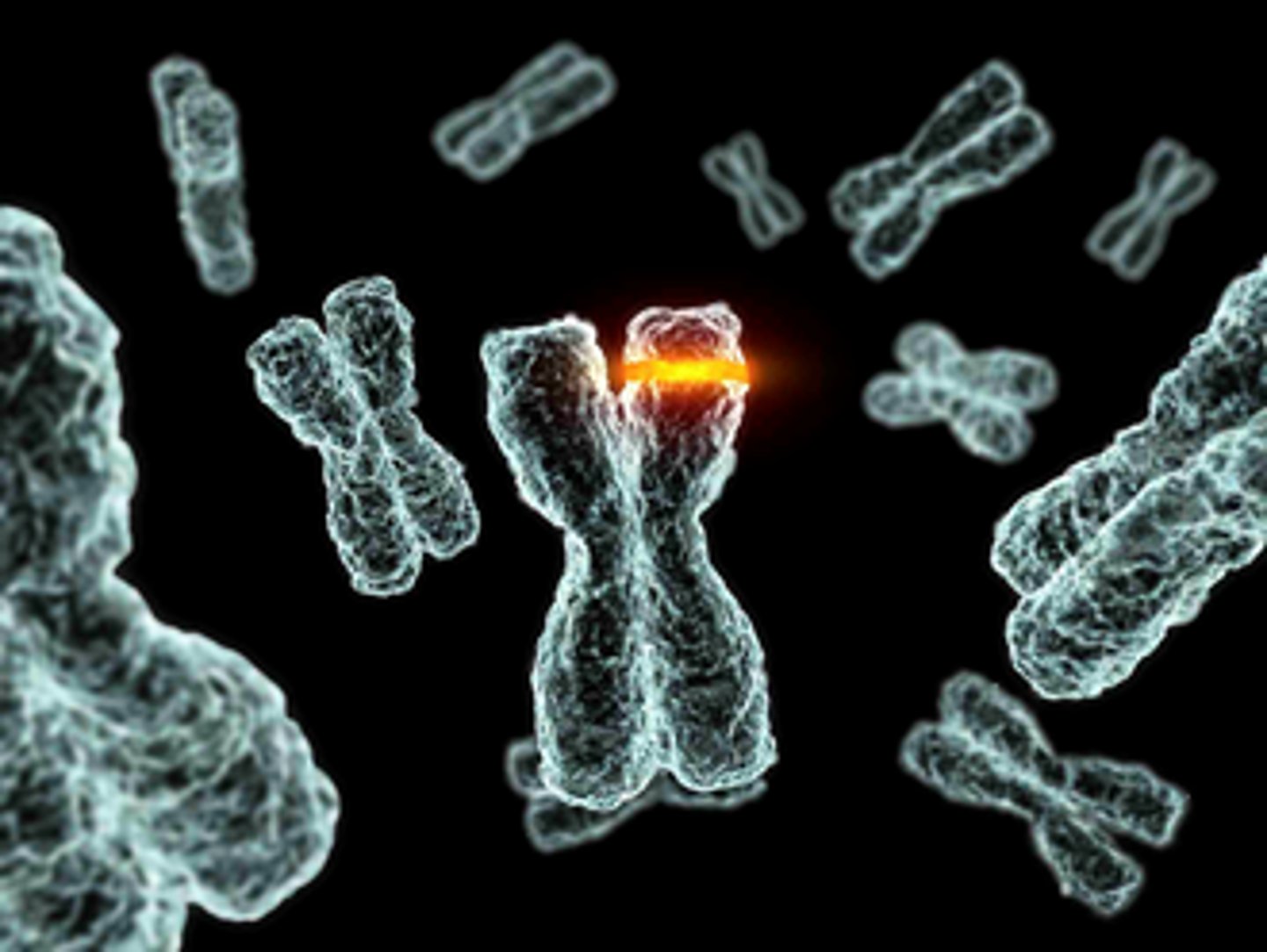
Selective breeding
The process by which humans breed particular plants and animals for particular genetic characteristics
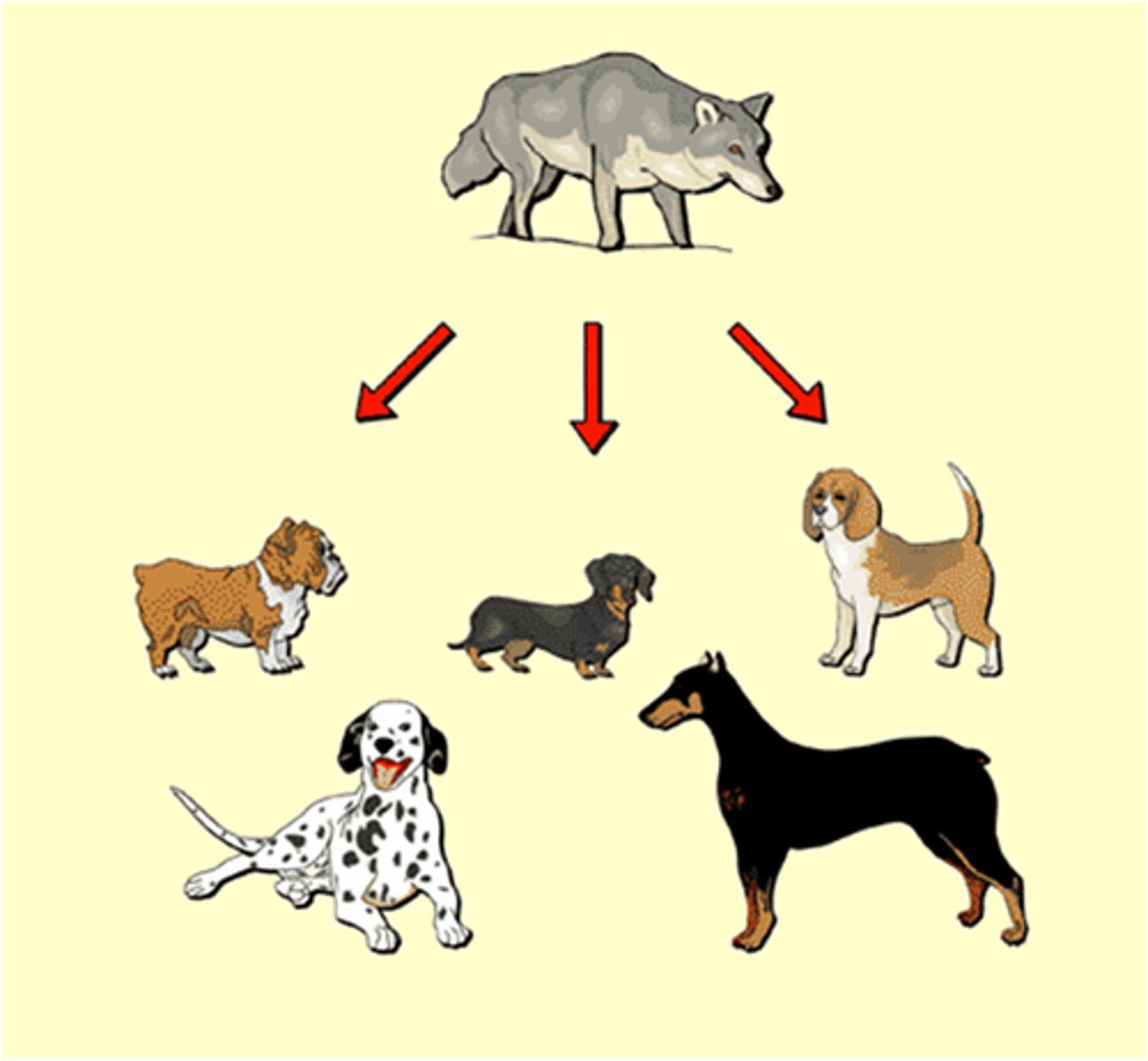
Process of selective breeding
1 - choose parents with desired characteristics from a mixed population
2 - breed them together
3 - choose offspring with the desired characteristics and breed them
4 - continue over many generations until all off spring show the desired characteristics
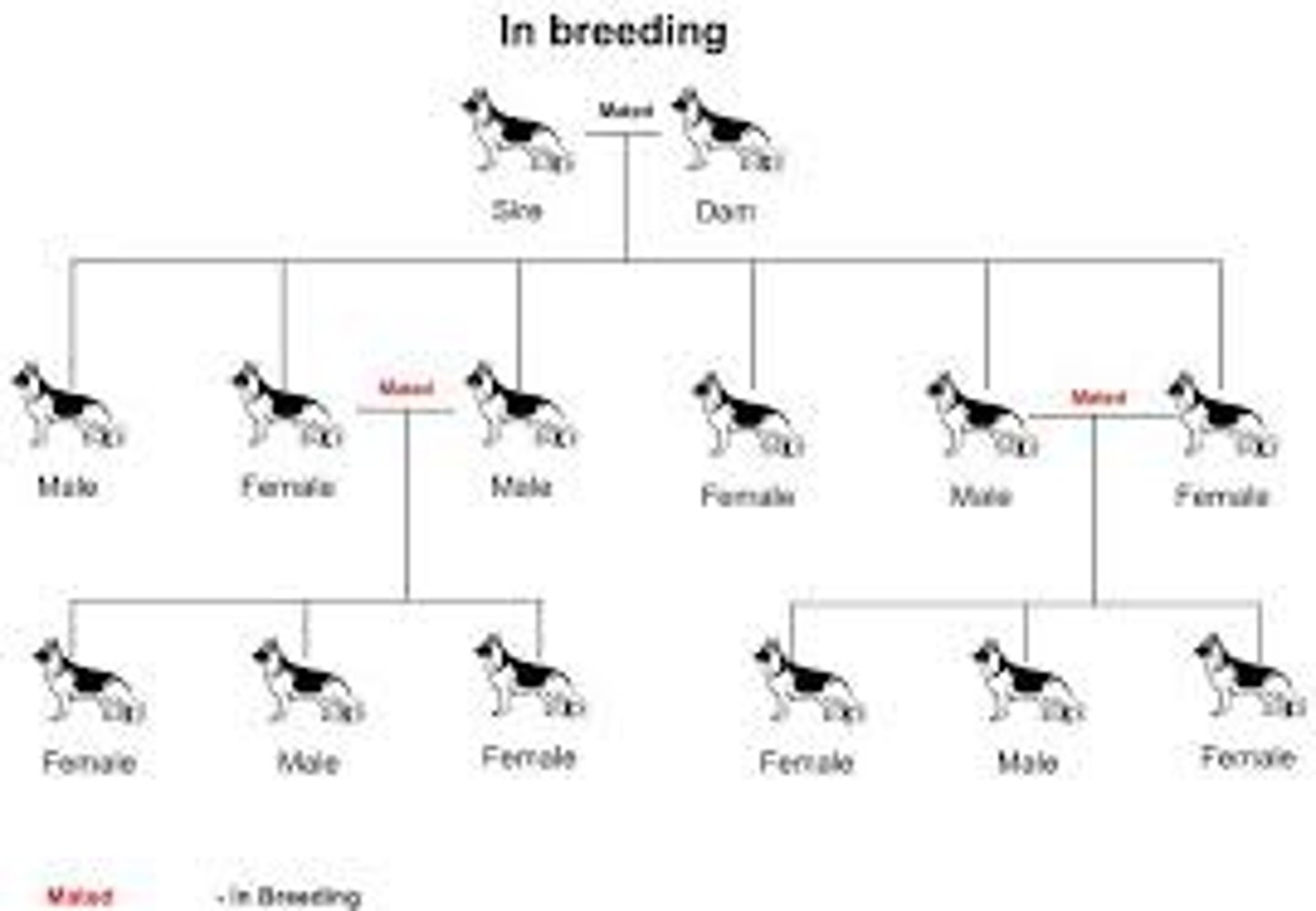
Characteristics targeted in selective breeding
-disease resistance in food crops
-animals that produce more meat or milk
-domestic dogs with a gentle nature
-larger of unusual flowers
Disadvantages of selective breeding
-can lead to interbreeding where some breeds are prone to inherited deflects or disease
-reduces variation meaning all of a species may be suspectable to a disease
Clone
An individual which has been produces asexually and is genetically identical to the parent

Adult cell cloning process
1 - remove a nucleus from desired specie's adult cell
2 - extract a mature egg from a member of the same species
3 - remove nucleus from the mature egg
4 - use a mild electric shock to fuse nucleus from desired species with the empty egg
5 - implant cloned embryo to another member of the same species before any cell differentiation
6 - organism is born as a clone of the desired species
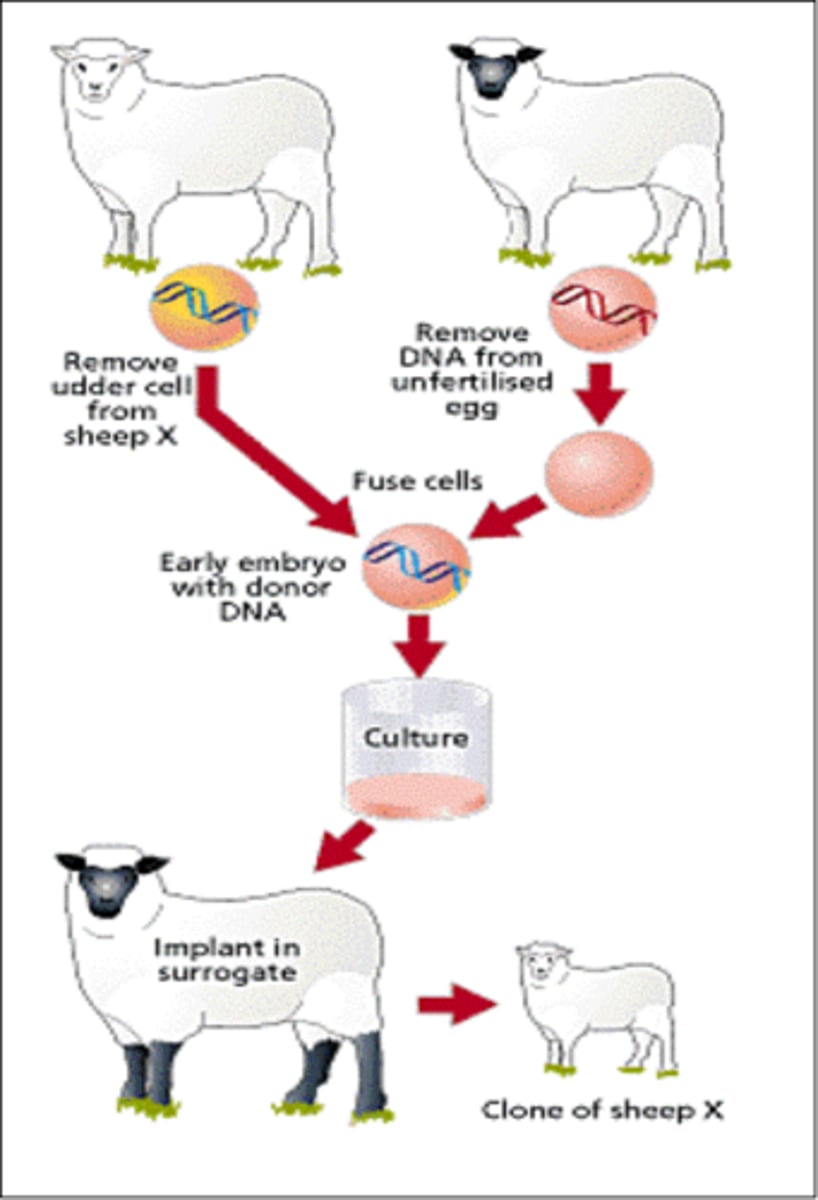
Tissue culture
Small groups of cells are used to grow identical new plants.
Important for preserving rare plant species and growing plants commercially in nurseries.
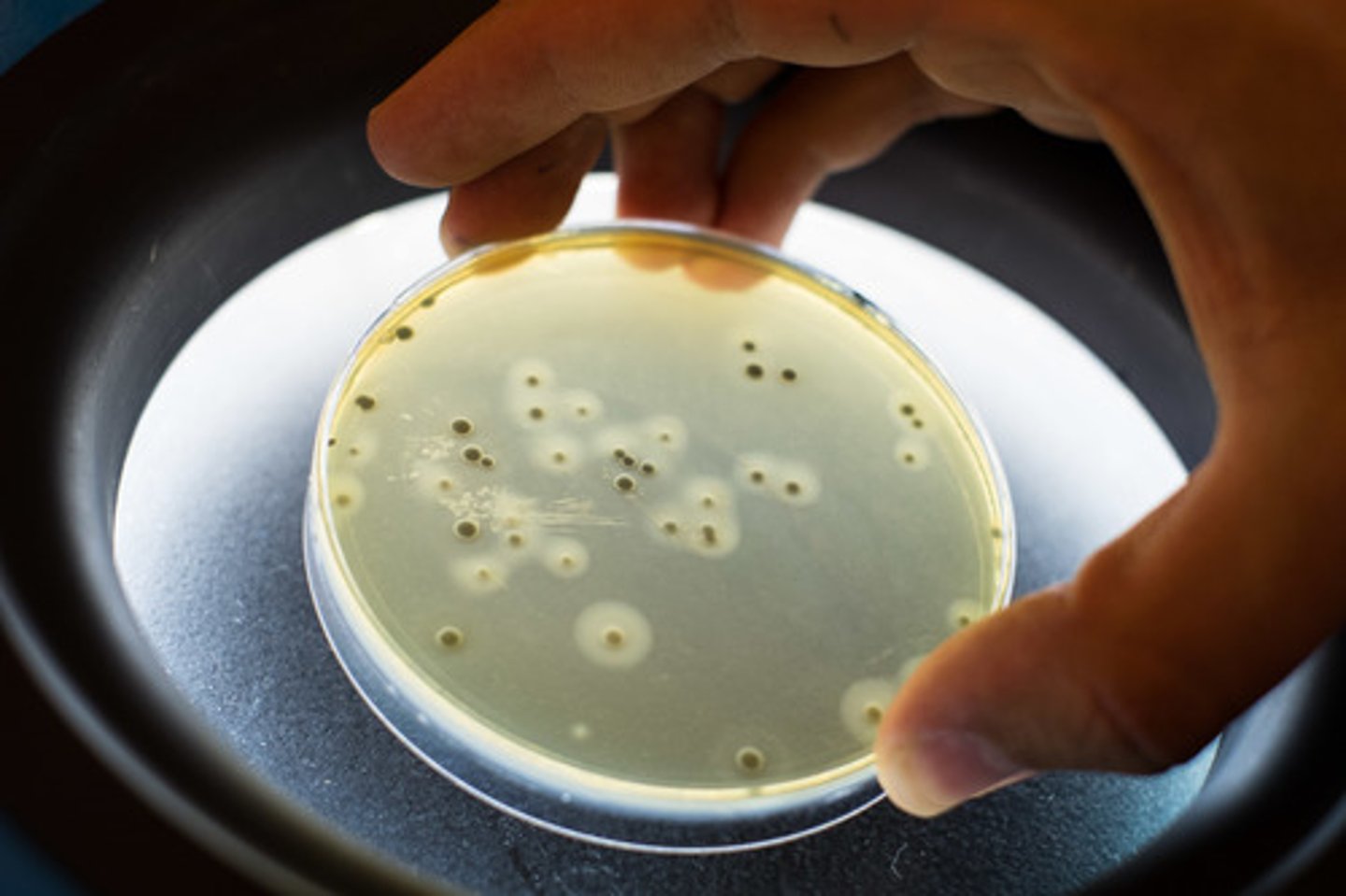
Cutting
Older and simpler method used by framers to produce many identical clones to parent plant
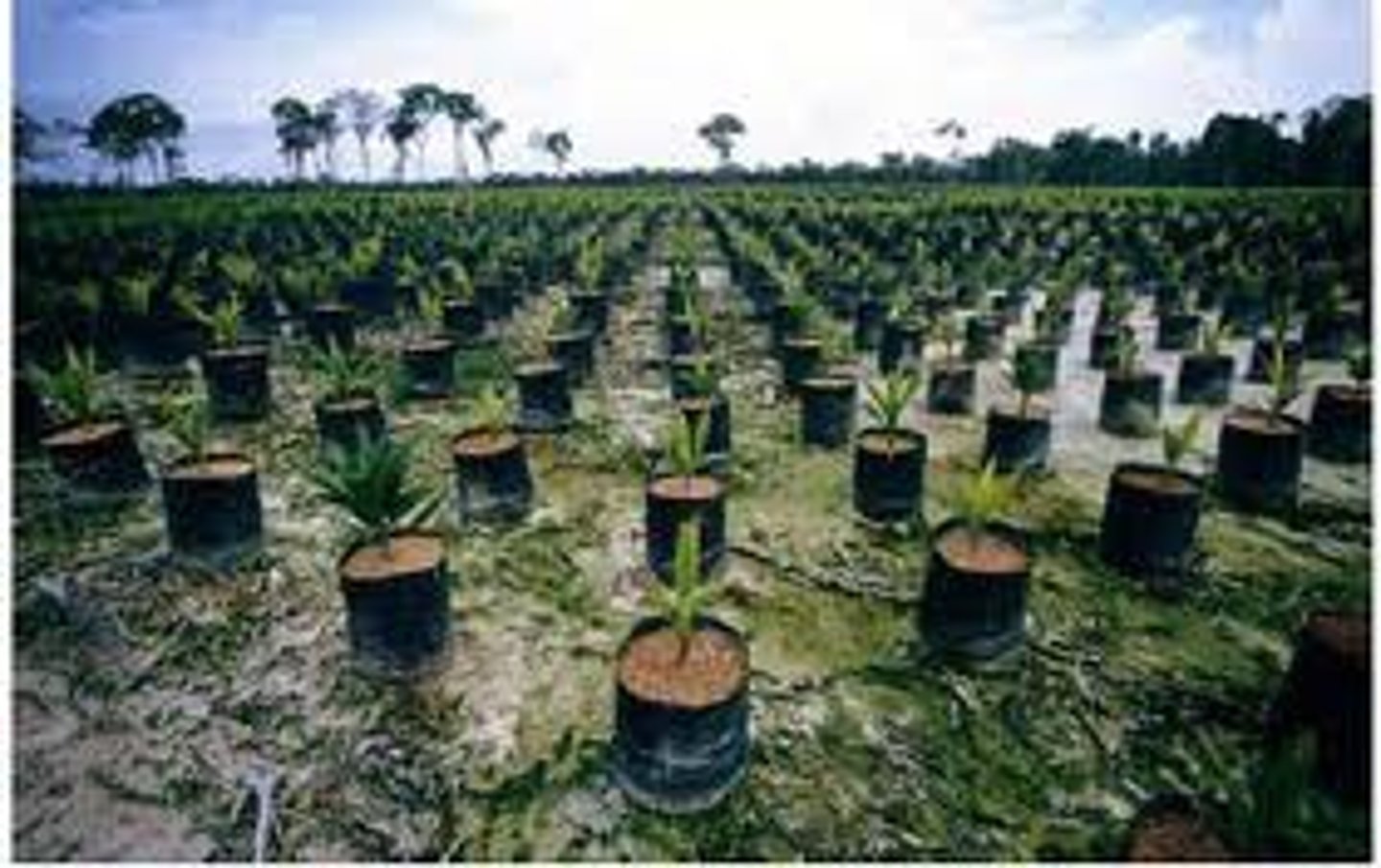
Embryo transplant
Cells are split apart from a developing animal embryo before they become specialised then identical embryos are transplanted to host mothers.
Benefits of cloning
-large number of identical offspring produced
-quick and economical
- desired characteristics are guaranteed
Risks of cloning
-limits variation
-clones may vulnerable to disease
-ethical issues
Genetic engineering
Changing the genome of an organism by introducing a gene from another organism to produce a desired characteristic
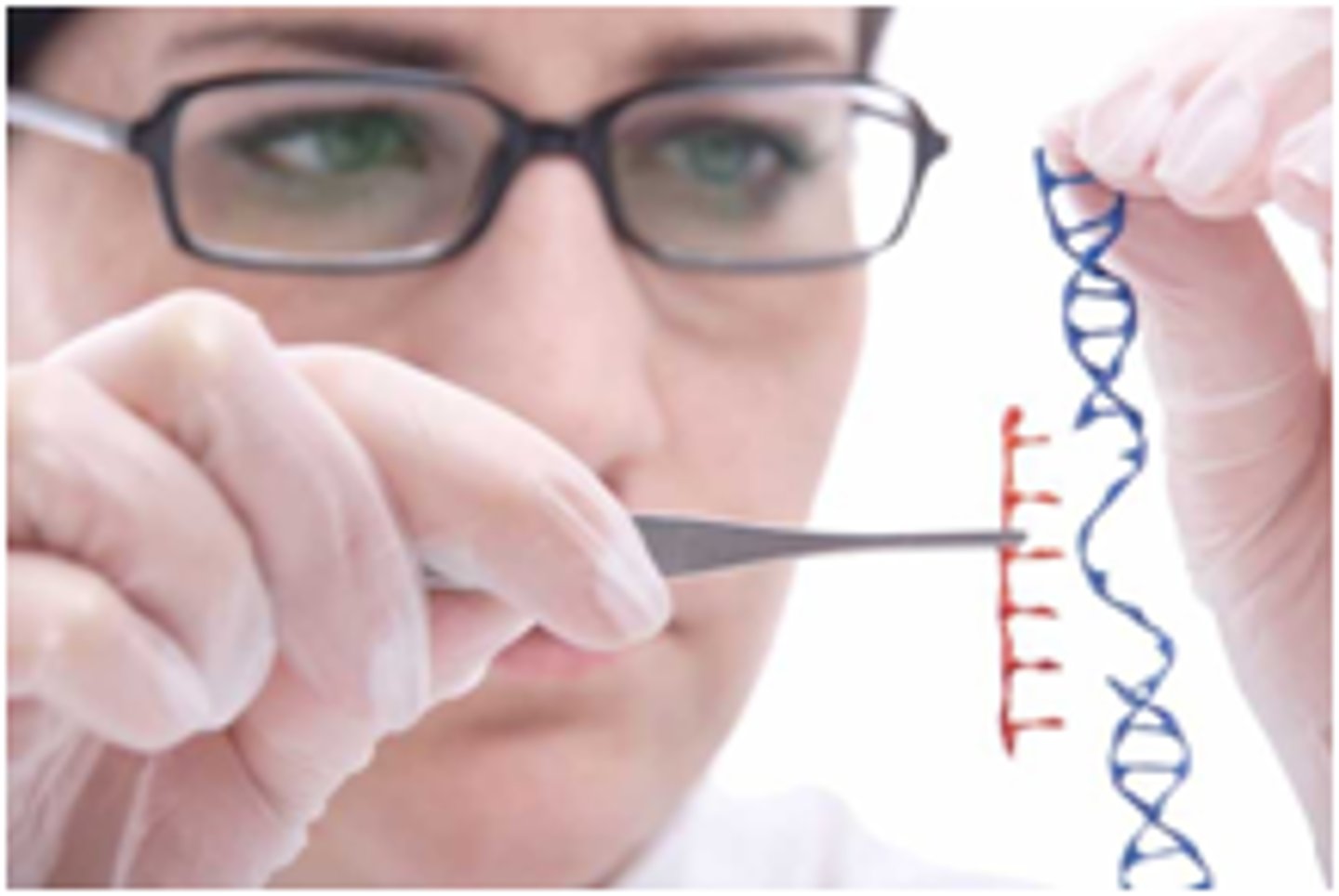
Process of genetic engineering
1 - extract a gene from a cell of an organism with a desired gene using an enzyme
2 - extract a vector out of a cell and split it open
3 - insert gene into the vector
4 - use the vector to insert gene into a required cell at an early stage of development
5 - desired characteristics are developed as the organism grows
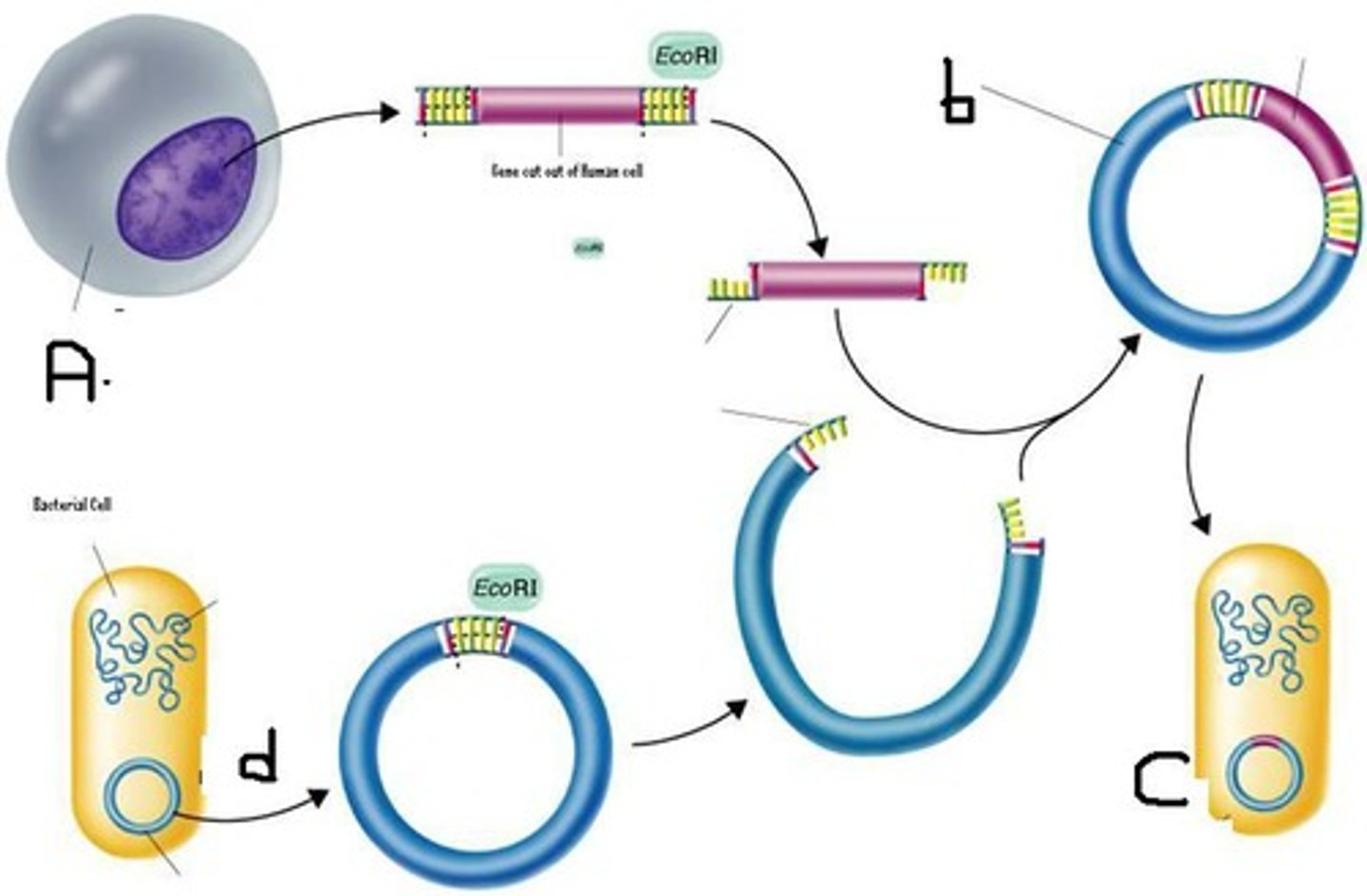
Examples of genetic engineering
-bacterial cells have been genetically engineered to produce insulin to treat type 1 diabetes
-plants have been genetically modified to be resistant to disease, insects or herbicides and to produce bigger and better fruits
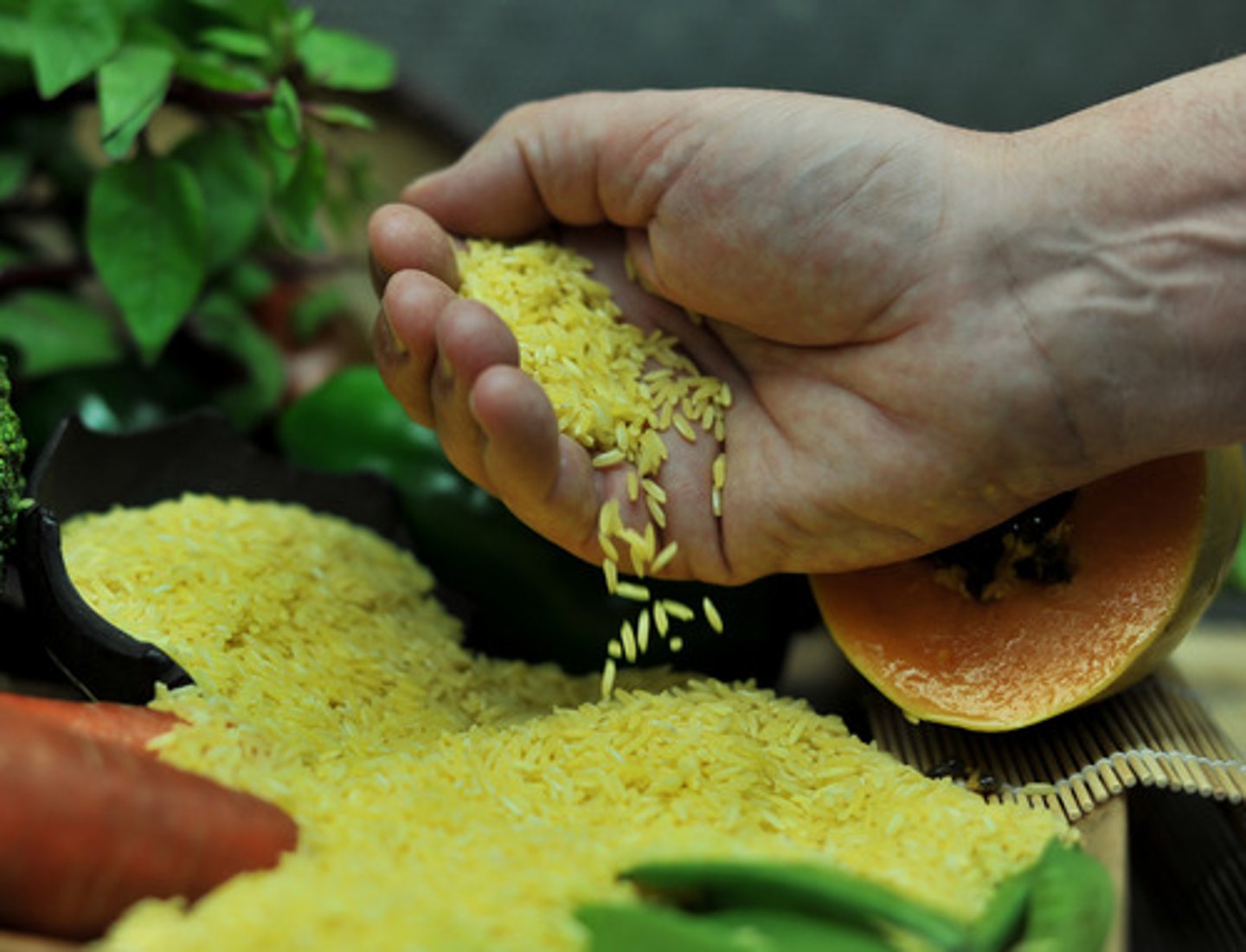
Benefits of genetic engineering
-potential to overcome some inherited diseases
-can lead to higher value of crops increasing the yield
-crops can make their own pesticides making them more resistant to environmental conditions
Risks of genetic engineering
-ethical concerns
-long term effects are not fully explored
-negative impacts on insect populations
Evolution
The gradual change in the inherited characteristics of a population through the process of natural selection which could lead to the formation of a new species
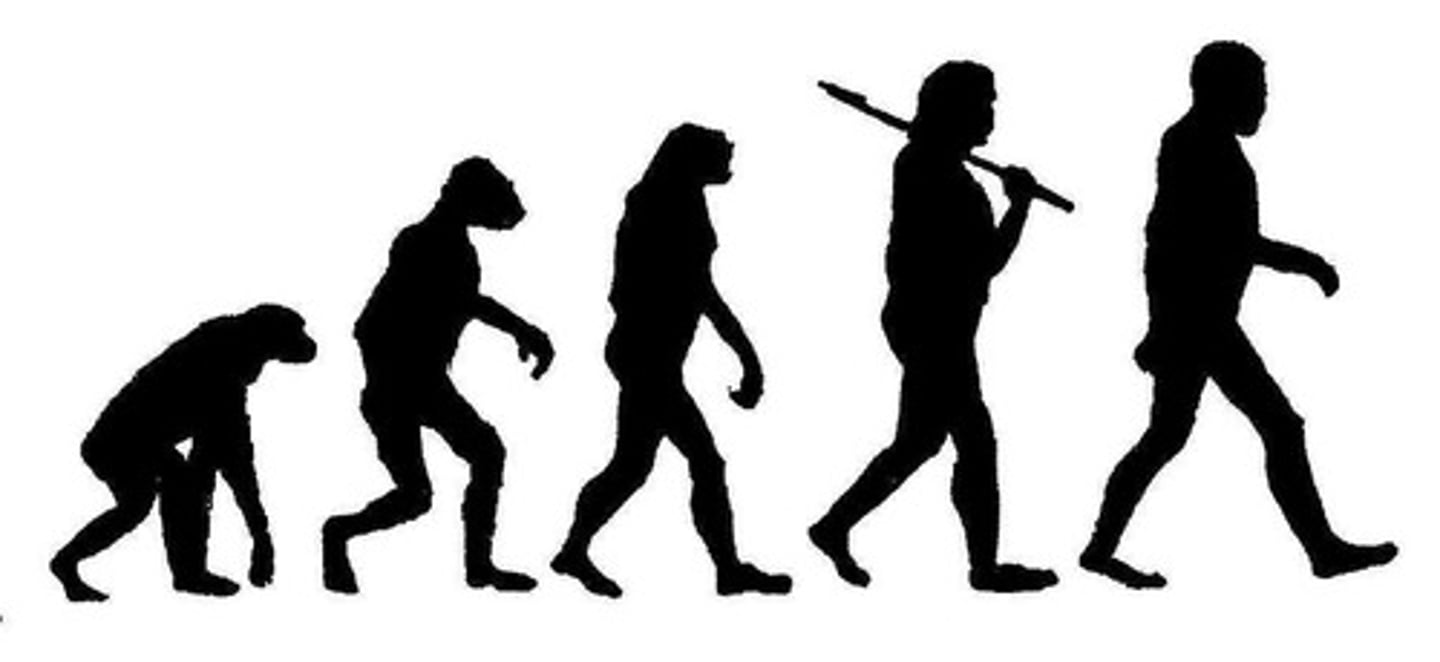
Process of natural selection
1 - organisms within the same species show wide range of variation in a phenotype
2 - individuals with characteristics most suited to the environment are more likely to survive and reproduce successfully
3 - these characteristics are passed on to their offspring
Darwin's theory of evolution
Evolution by natural selection. All living species evolved from a common ancestor that first developed billions of years ago
Why was Darwin's theory discouraged
-challenges the idea that god created all plants and animals on earth
-lack of evidence
-science of the genome not fully understood
Lamark's theory
Acquired characteristics. The changes that occur to an organism in its lifetime is passed on to its offspring.
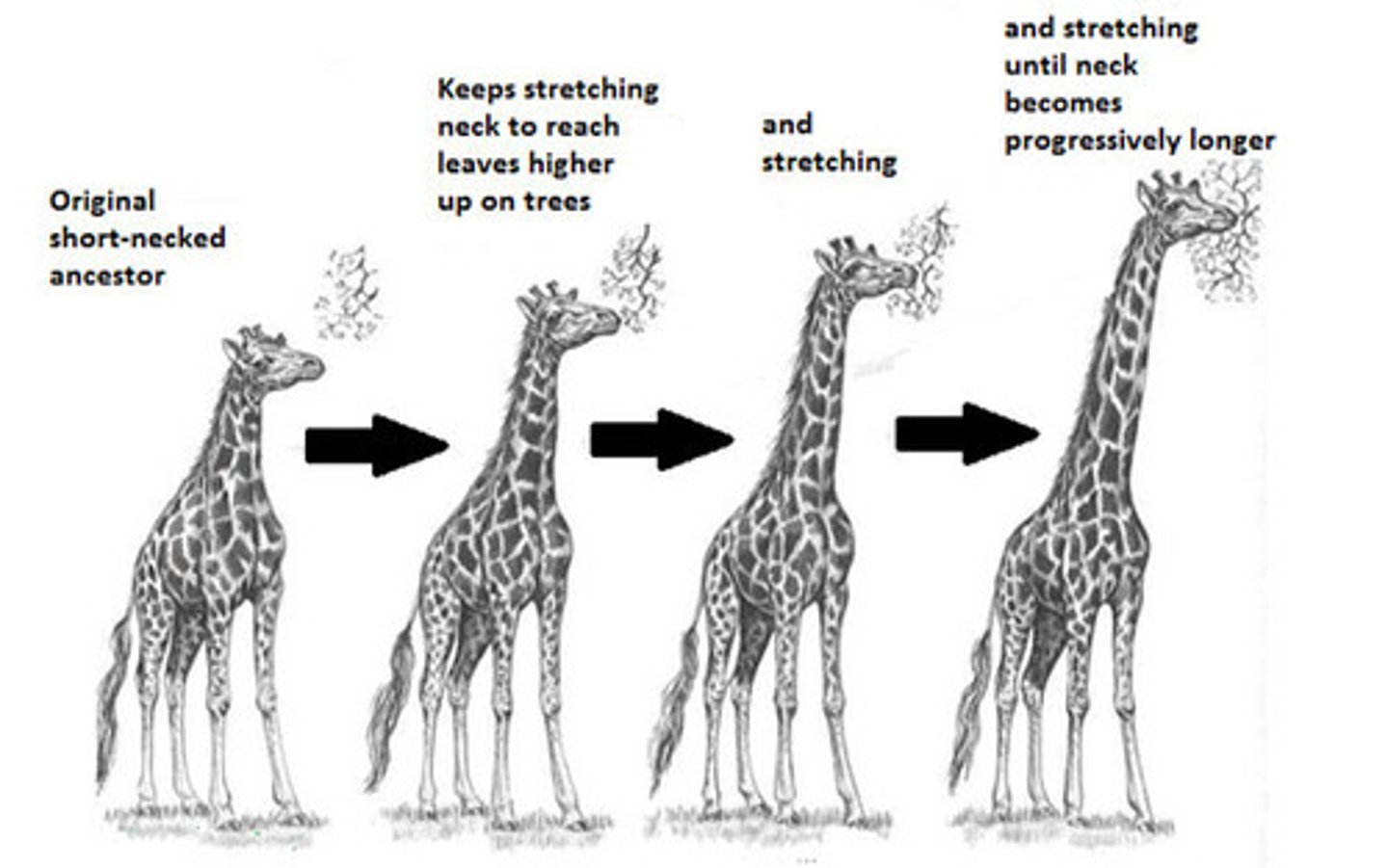
Evidence for evolution
-fossil records
-antibiotic resistance
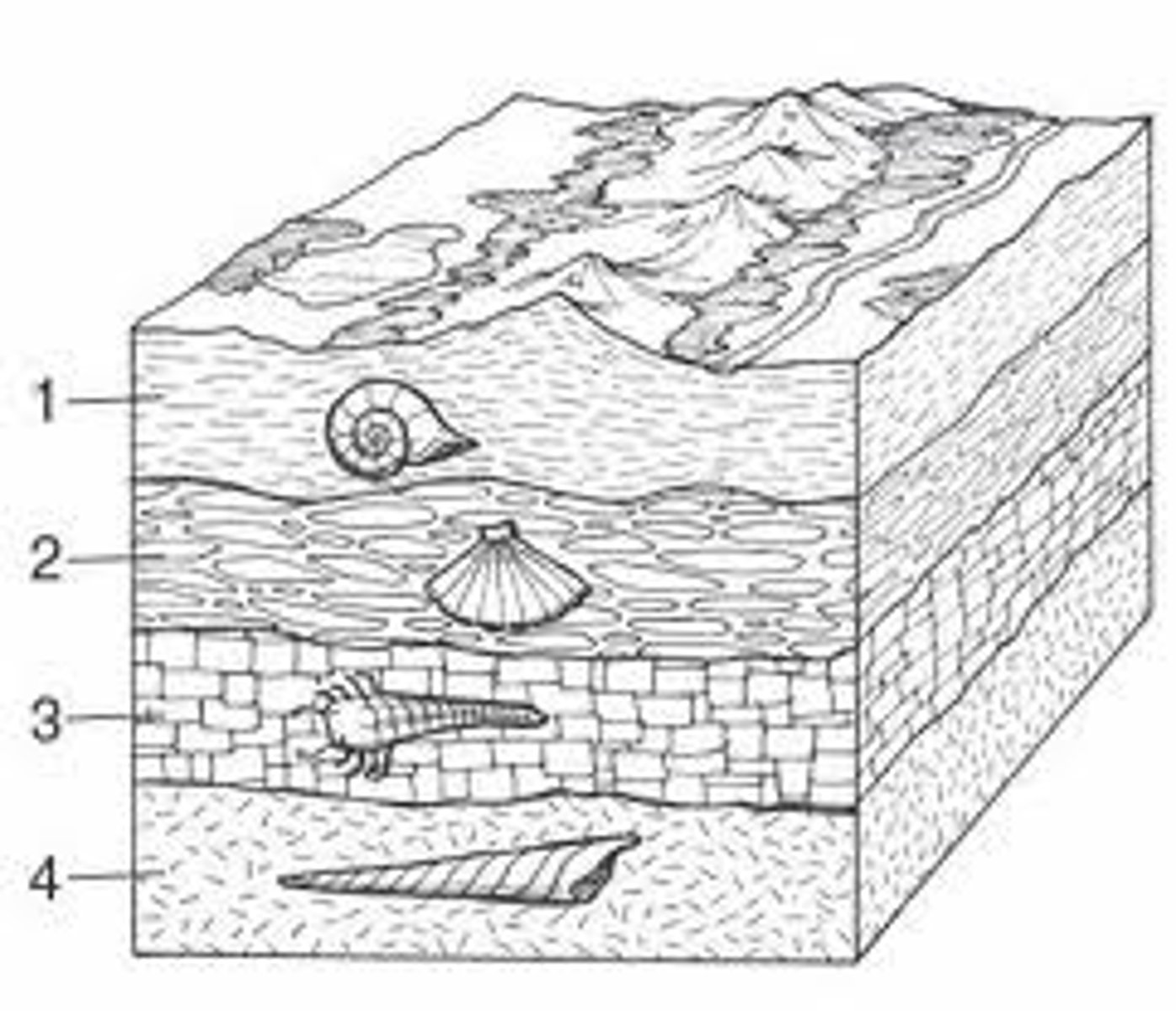
Speciation
The gradual formation of a new species as a result of evolution.
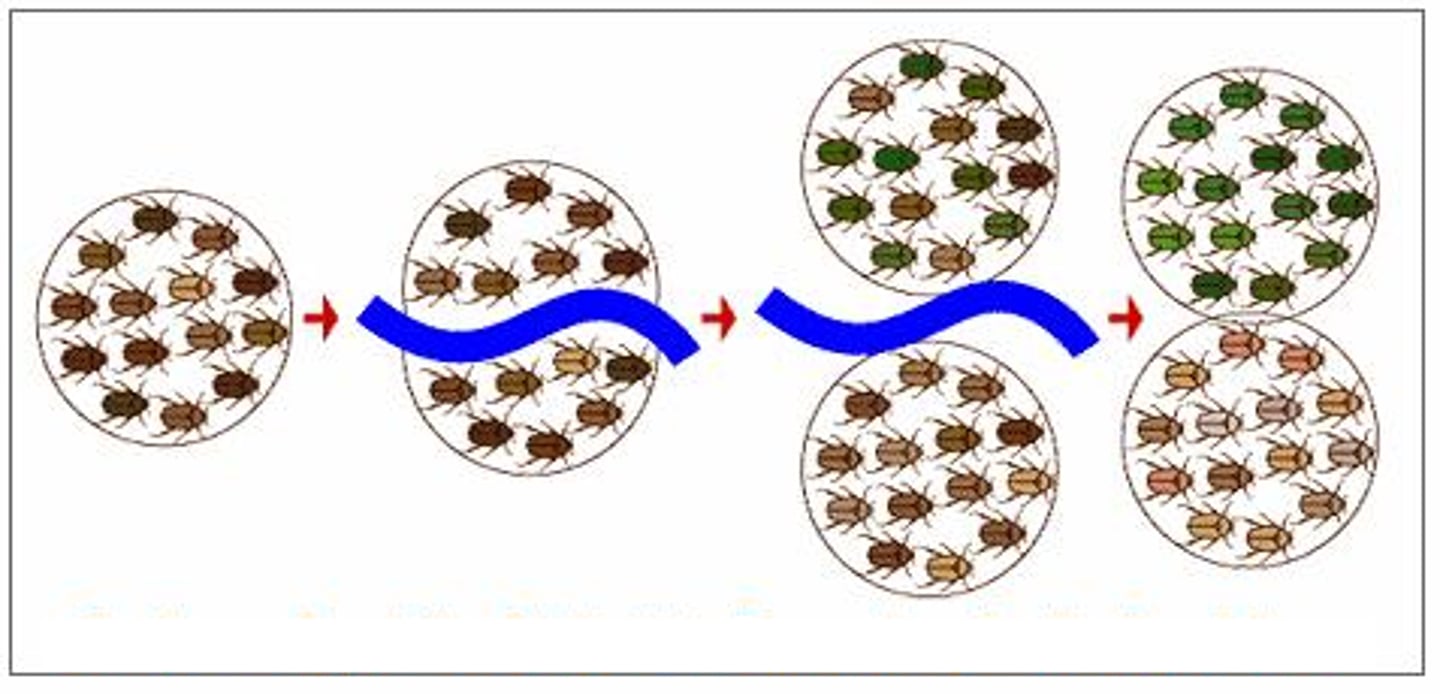
Process of speciation
1 - two populations of one species are geographically isolated
2 - natural selection occurs so better adapted individuals reproduce and pass on these different characteristics
3 - populations have increasing number of mutations as they adapt to different environments
4 - eventually two populations are so genetically different that they can't breed to produce fertile offspring
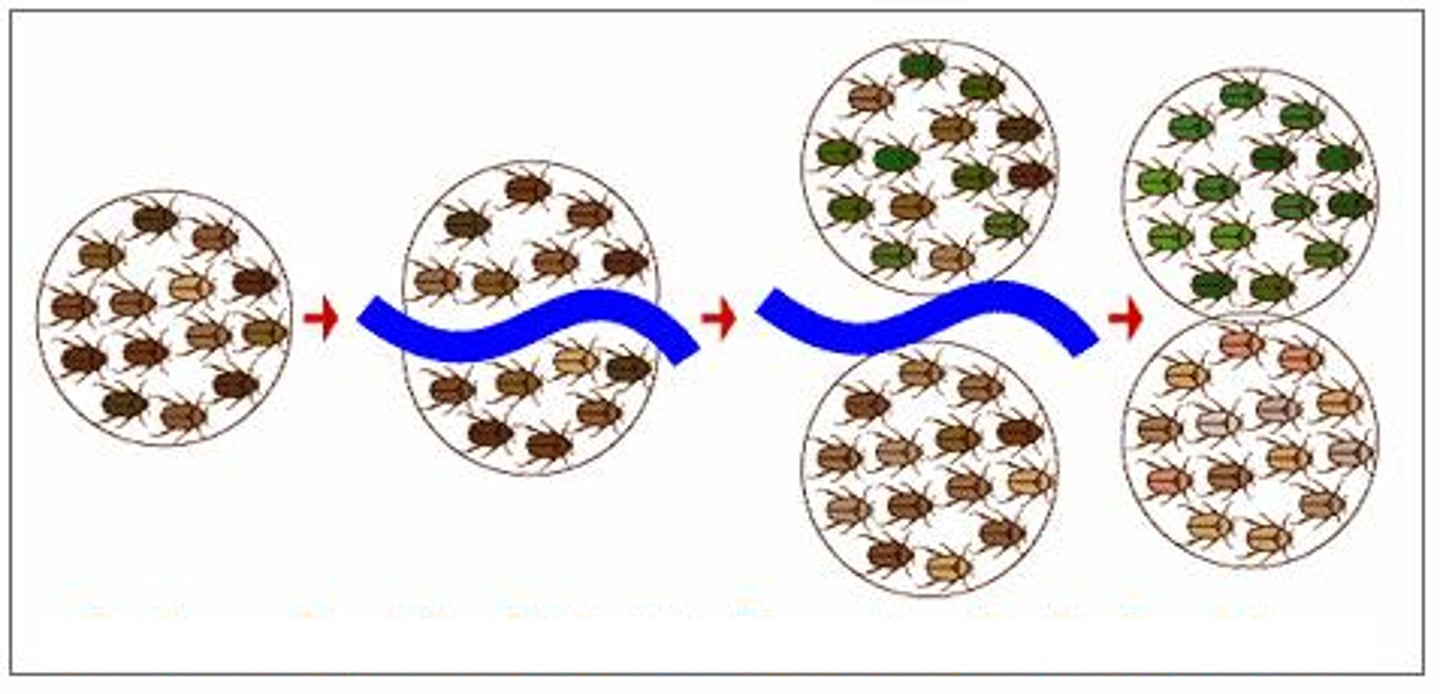
Extinction
No remaining individuals of species are alive
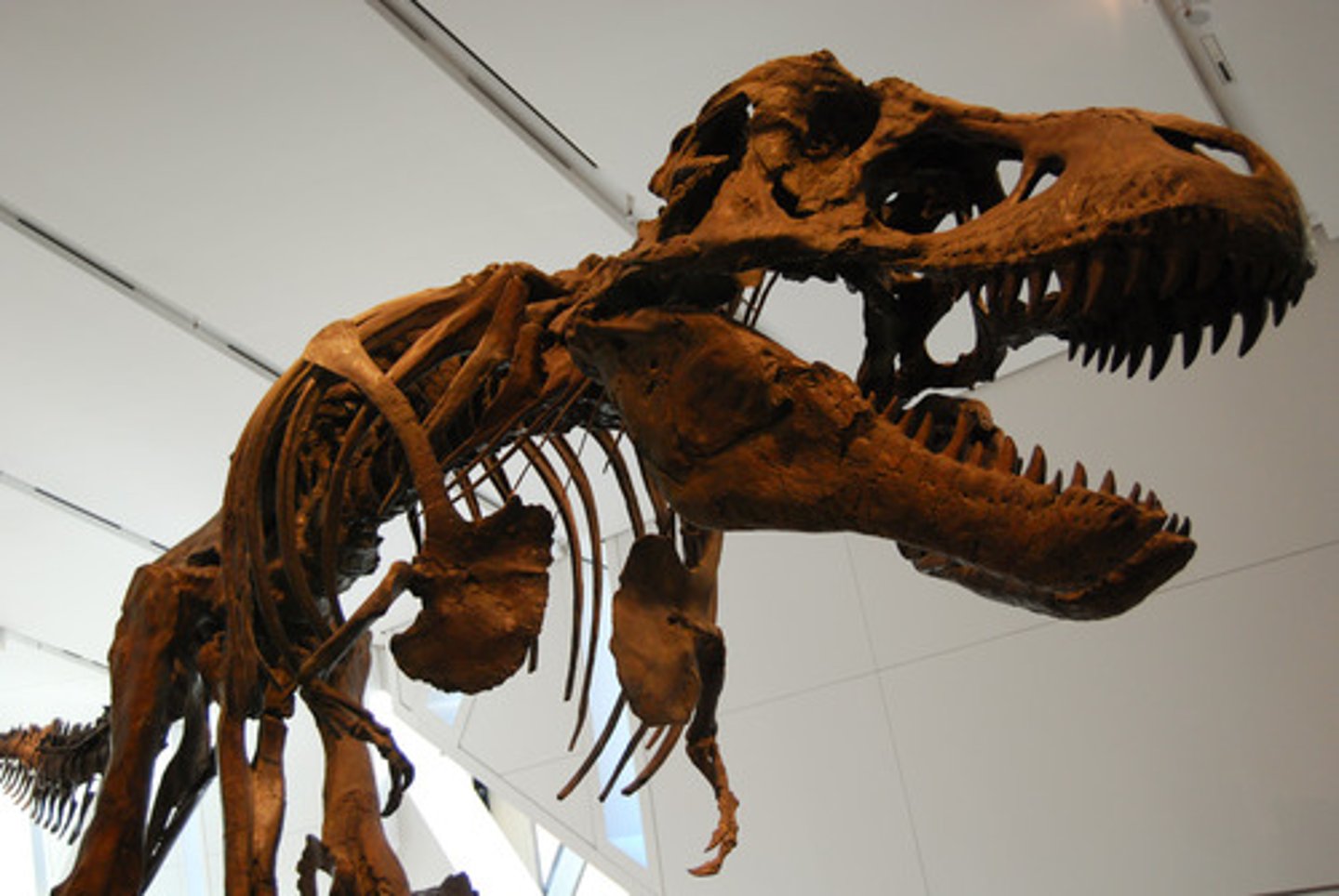
Factors affecting extinction
-new predators
-new diseases
-catastrophic events
-increased competition for resources or mates
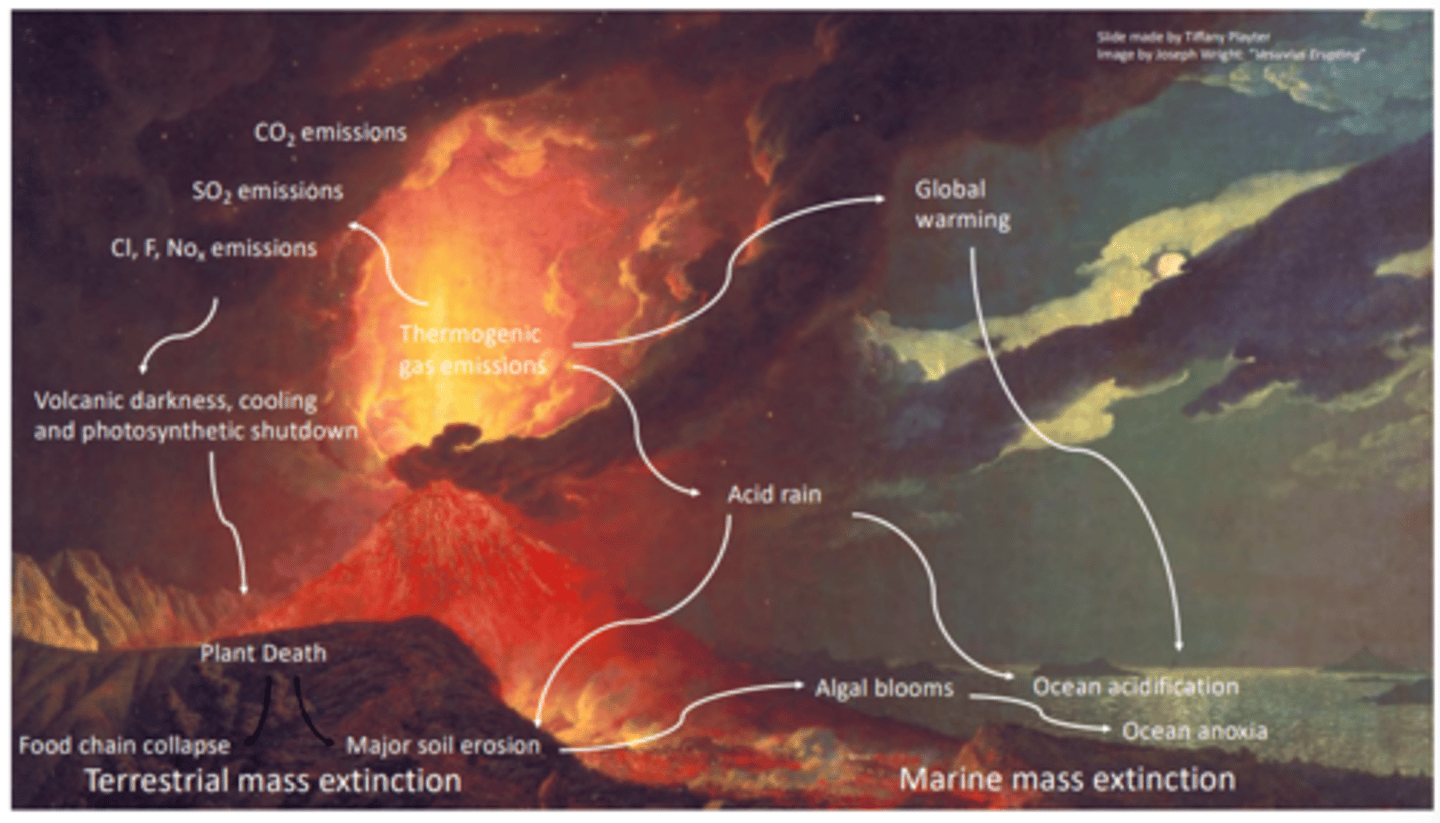
Fossils
Remains of an organism from millions of years ago found in rocks
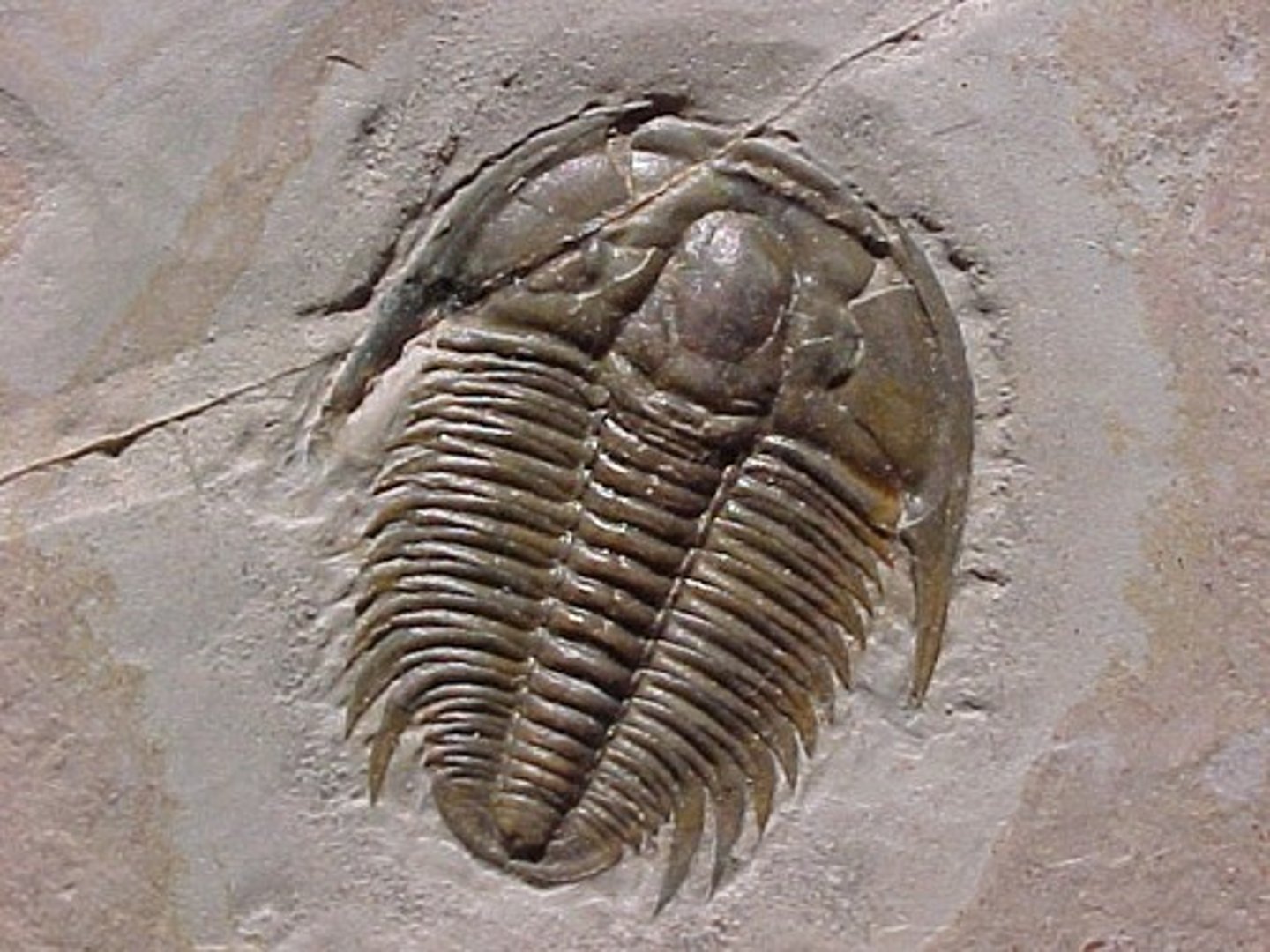
How can fossils be formed
-parts of an organism do not decay
-hard parts of an organism are replaced by minerals
-traces of organism
Advantages of fossil records
-can tell scientists how individual species have changed overtime
-develop understanding on the earth's history
Problems with fossil records
-many early organism were soft bodied so they decayed before producing fossils
-there gaps in fossil records as no fossils have been found because some may of been destroyed by geological or human activity
Carl Linnaeus' classification system
kingdom,phylum,class,order,family,genus,species
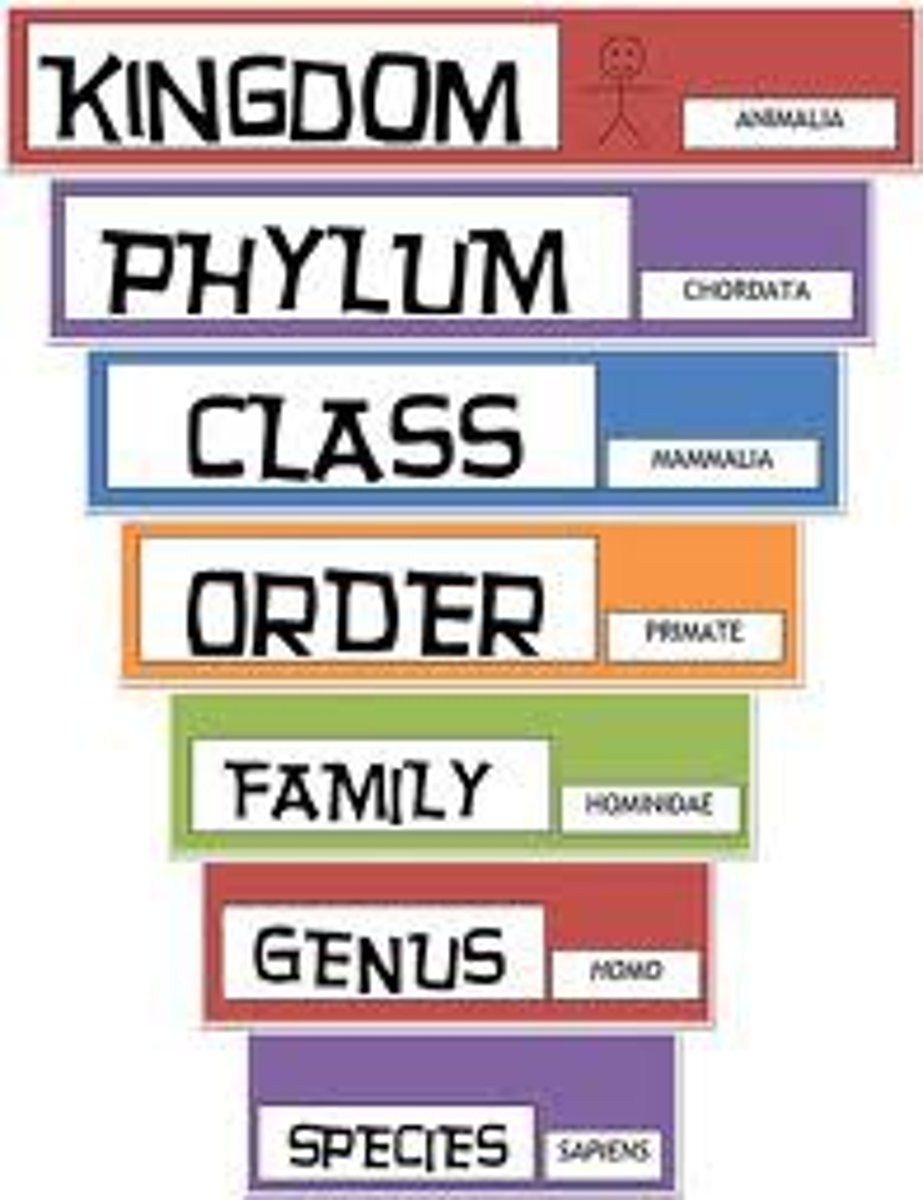
Binomial naming system
Capital genus and lower case species
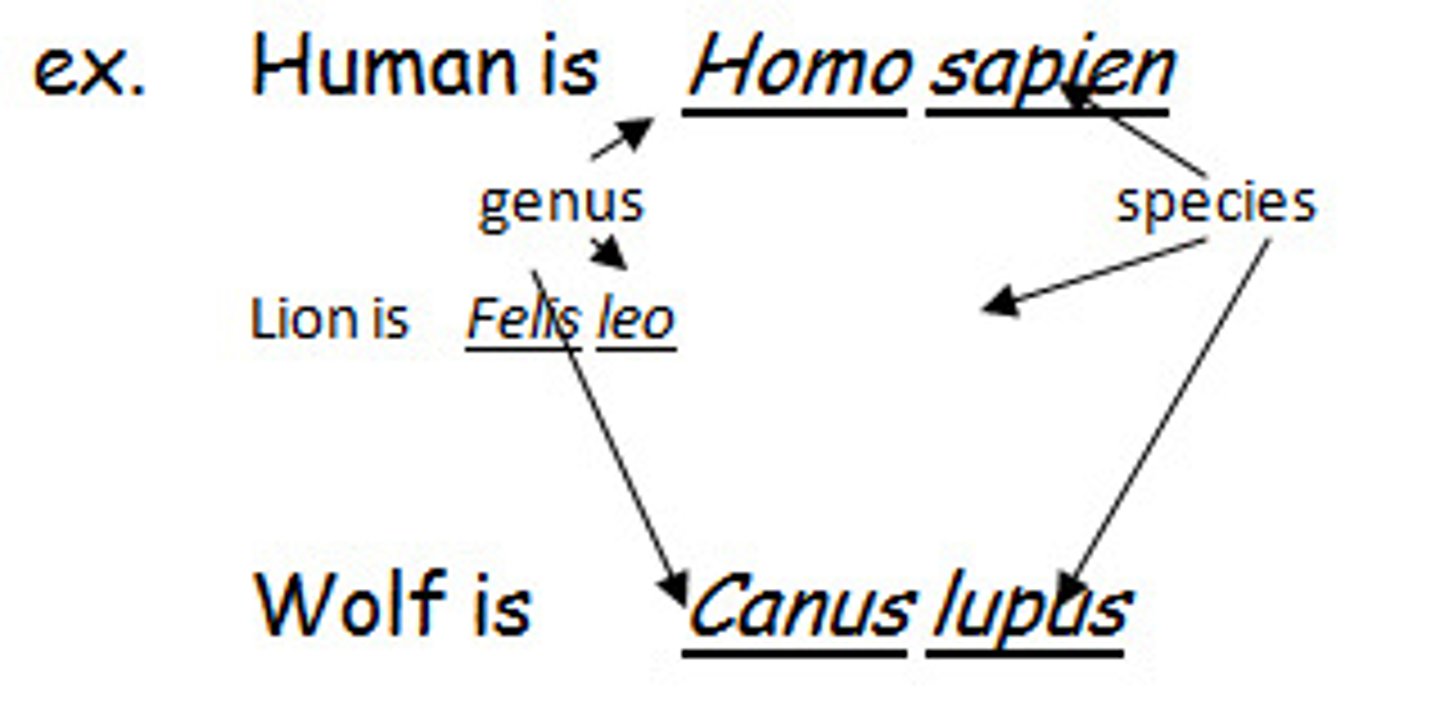
Carl Woese's three domain system
Archaea - extremophiles
Bacteria - true bacteria
Eukaryota - protists, fungi, plants and animals
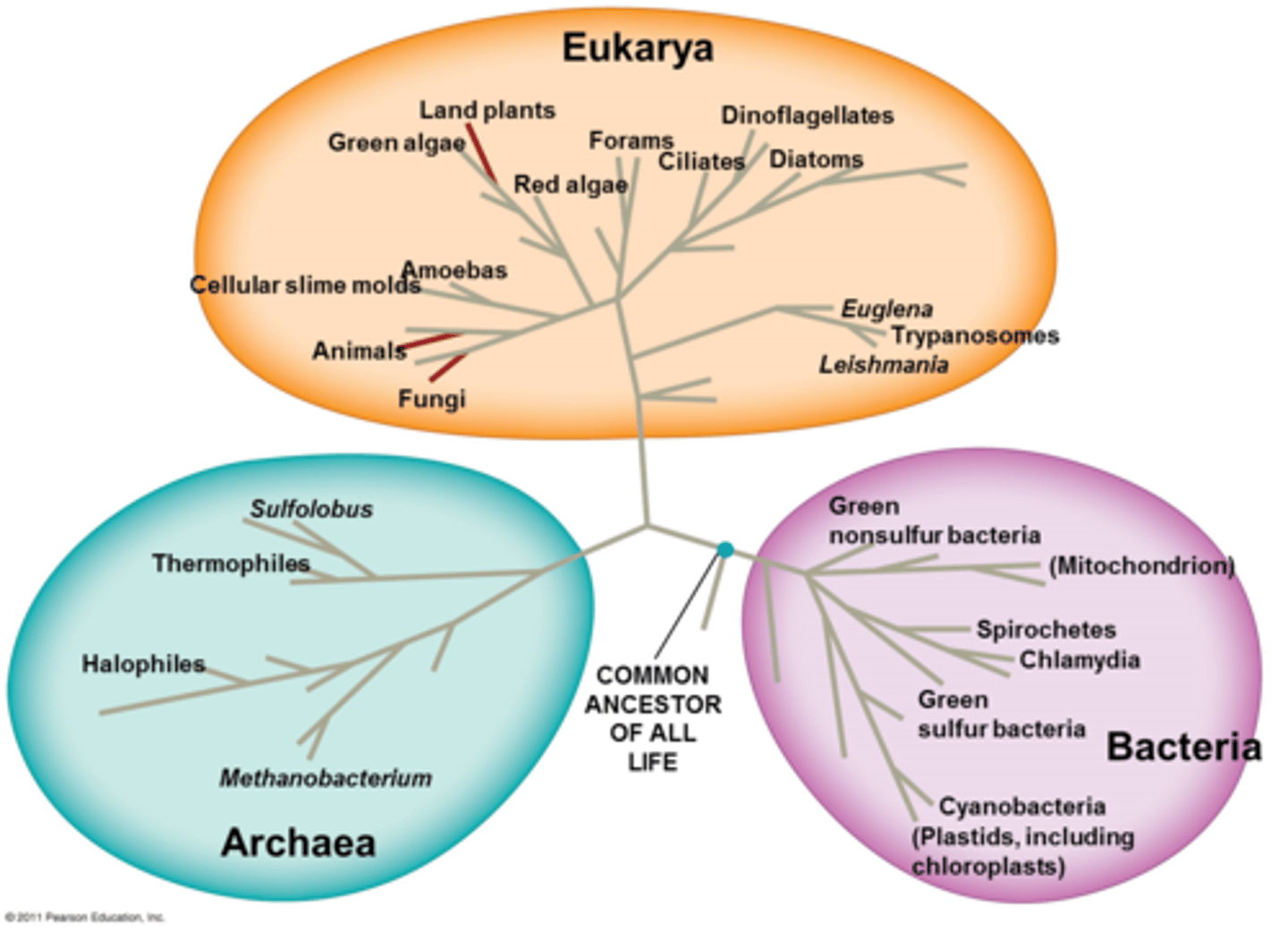
How do bacteria develop antibiotic resistance
1 - bacteria evolve rapidly causing many mutations and a high variation
2 - some bacteria are resistant to bacteria
3 - these resistant bacteria asexually reproduce to form a colony called an antibiotic resistant strain
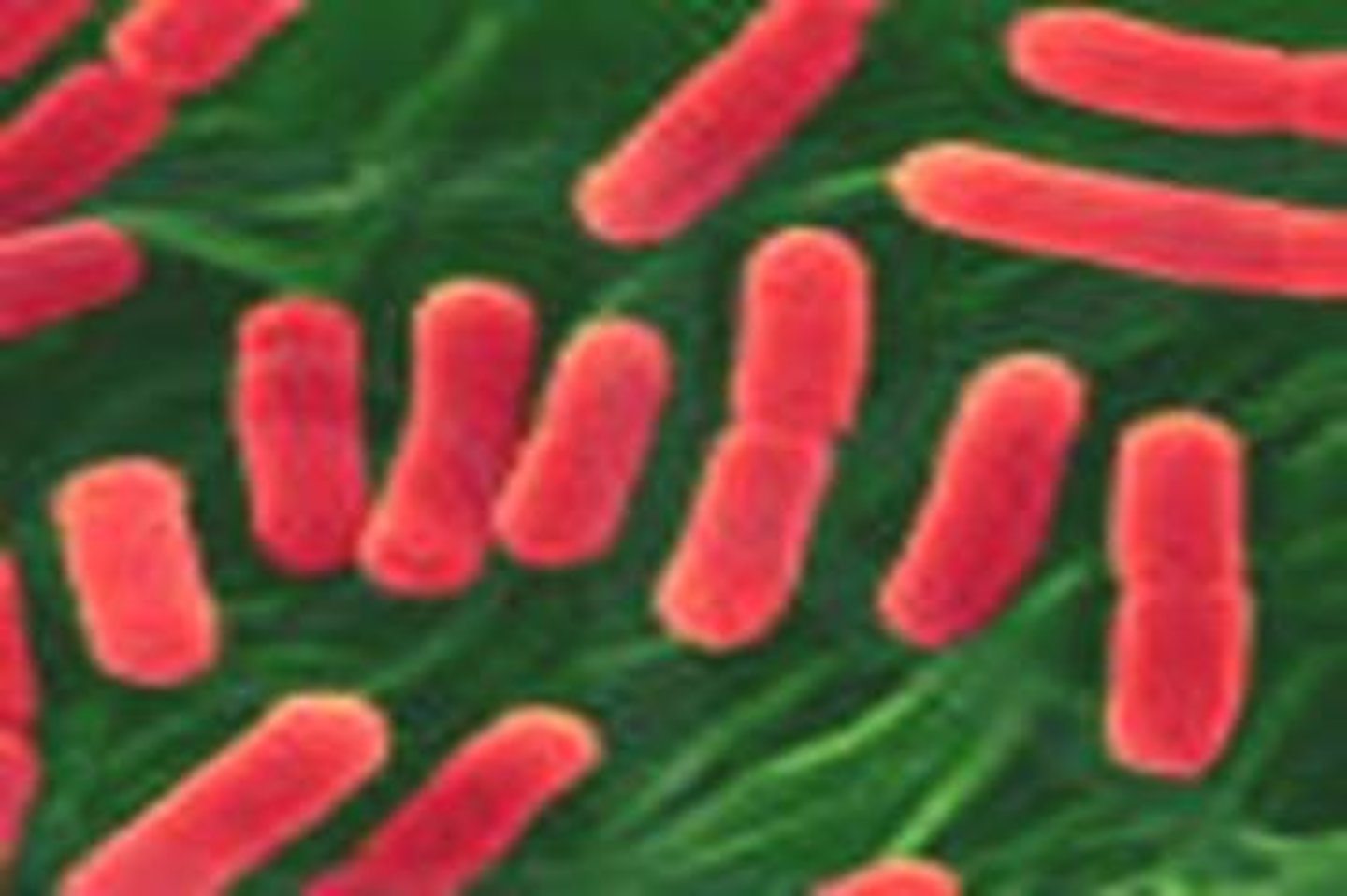
Reducing risk of antibiotic resistance
-Only prescribing antibiotics to people with serious bacterial infections
-Patients should take full dosage to ensure all bacteria is killed
-limit antibiotic use in farming and agriculture

Mendel on genetics
Used pea plants to determine that inheritance of each characteristic is developed by units that are passed on unchanged to offspring.
These genes are either dominant or recessive
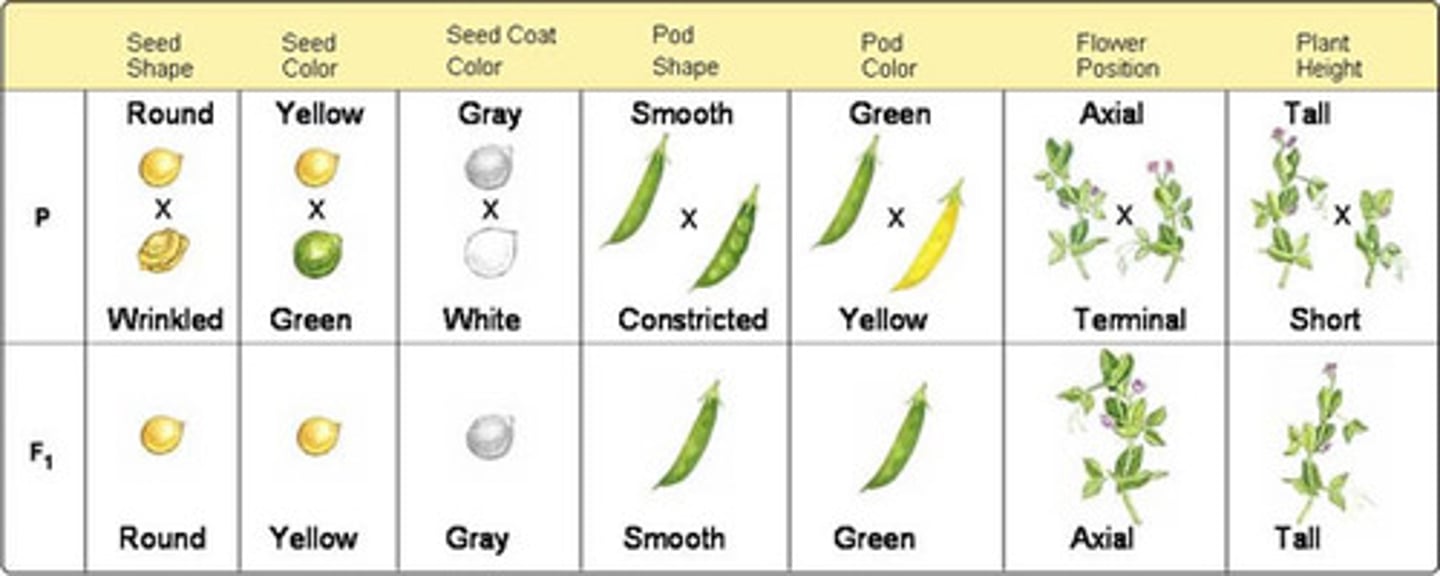
Why was mendel's work not recognised until after he died
-most scientists believed in blended inheritance
-he was a monk not a scientist
Development of the gene theory
Late 19th century - behaviour of chromosomes during cell division not observed
Early 20th century - genes and chromosomes observed to behave similarly leading to idea that genes are in chromosomes
Mid 20th century - structure of DNA and mechanism of gene function were determined
Sexual reproduction
-two parents
-cell division through mitosis
-fusion of gametes, sperm in egg ine animals, pollen and ovule in plants
-produces genetically different offspring
Asexual reproduction
-one parent
-cell division through mitosis
-no fusion of gametes
-produces genetically identical offspring
Sexual reproduction advantages
-produces variation in offspring which is beneficial if the environment changes as they could have a survival advantage by natural selection
Sexual reproduction disadvantages
-finding a mate and reproducing is time and energy consuming
-much slower than asexual reproduction
Asexual reproduction advantages
-only one parent needed
-time and energy efficient
-faster than sexual reproduction
-many offspring can be produced in favourable conditions
-successful traits passed on to identical offspring
Asexual reproduction disadvantages
-harmful mutations passed on to identical offspring
-lack of genetic variation can lead to a major survival disadvantage if the environment changes
Organisms that reproduce both sexually and asexually
-malaria parasites reproduce asexually in human hosts but sexually on mosquitos
-fungi reproduce asexually by spores but also sexually to give variation
-many plants produce seeds sexually but also asexially by bulb divison or runners
Meiosis definition
A type of cell division that makes gametes in the reproductive organs
Meiosis and fertilisation process
1 - DNA in parent cell replicates
2 - first cell division into two daughter cells each containing a paired chromosome set
3 - second cell division into four daughter cells with a single chromosome set which are all genetically different
4 - when egg is fertilised it divides by mitosis to form an embryo
5 - cells in the embryo differentiate as it develops
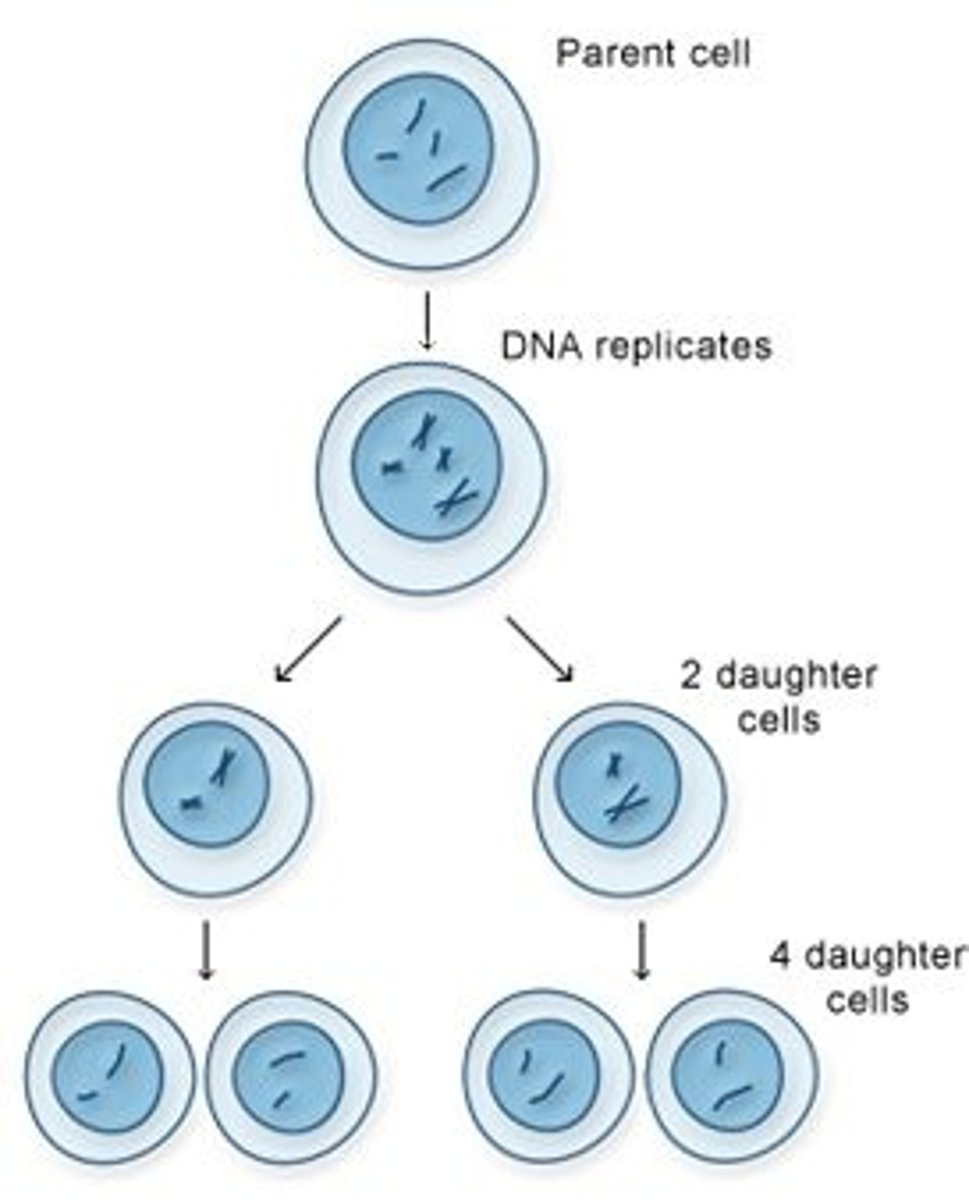
Gamete
specialised sex cell formed by meiosis
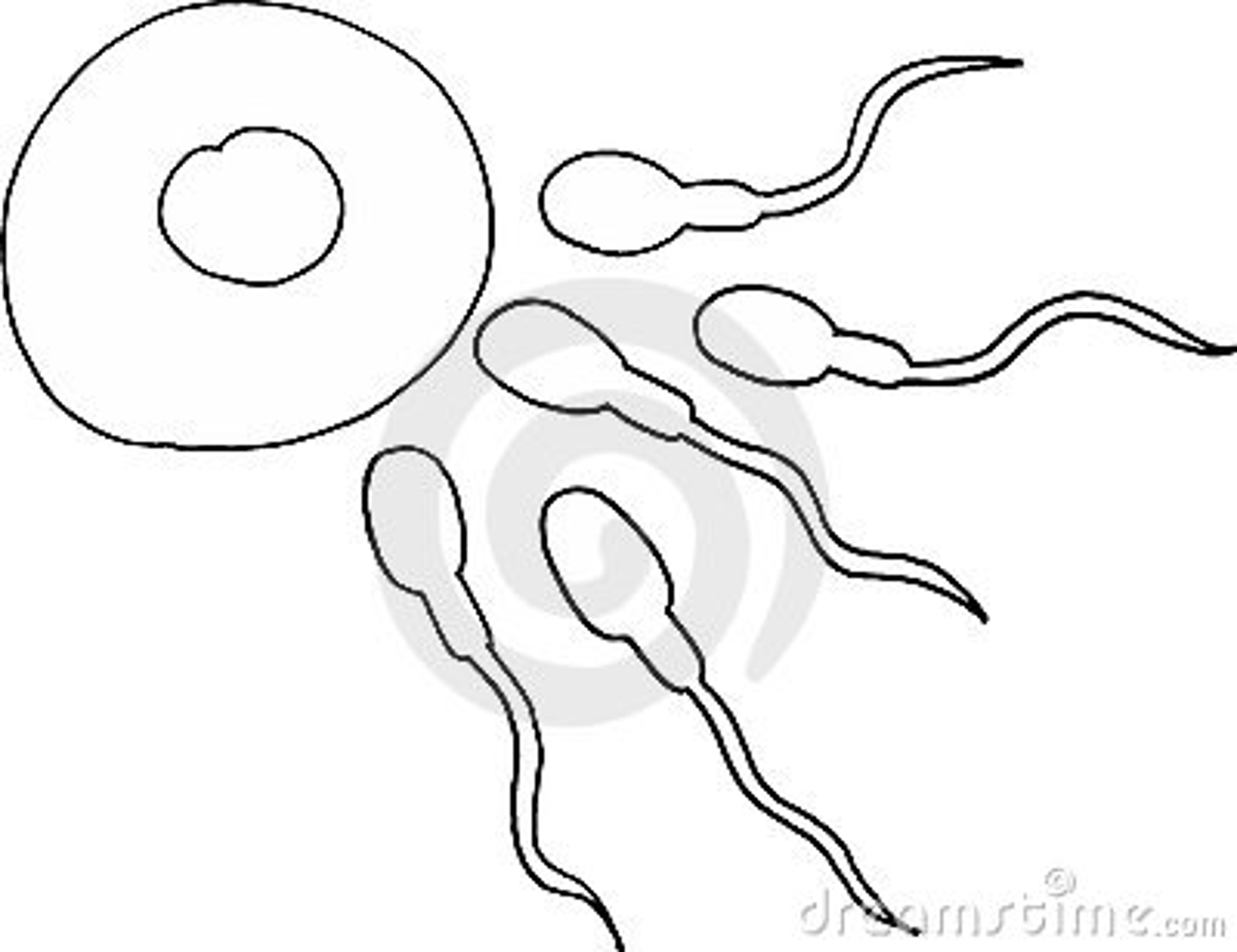
Chromosome
long molecule found in the nucleus of cells made from DNA
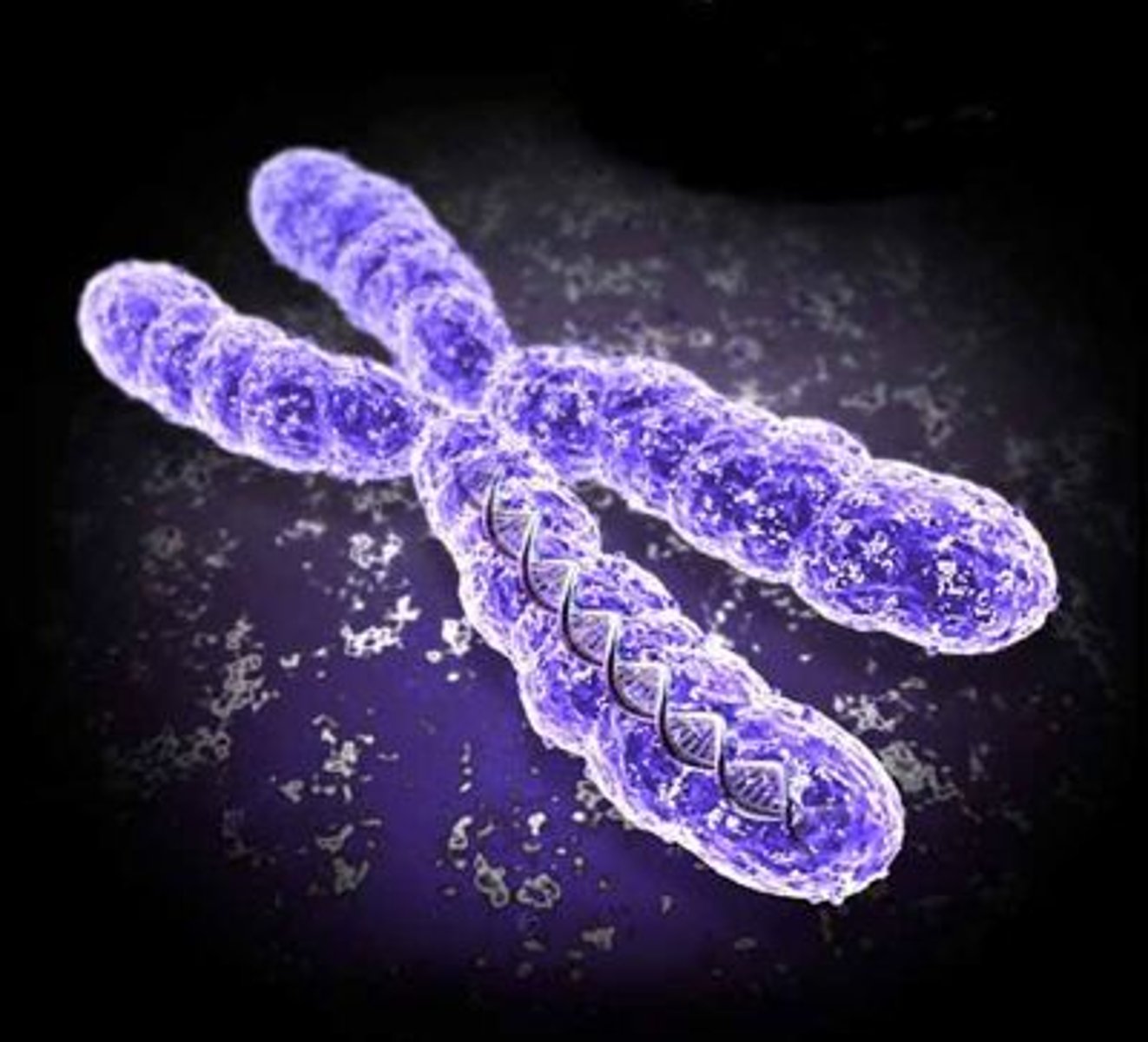
Gene
the section a DNA on a chromosome that codes for a protein. Some characteristics are controlled by a single gene but many by genes interacting
Allele
different forms of the same gene
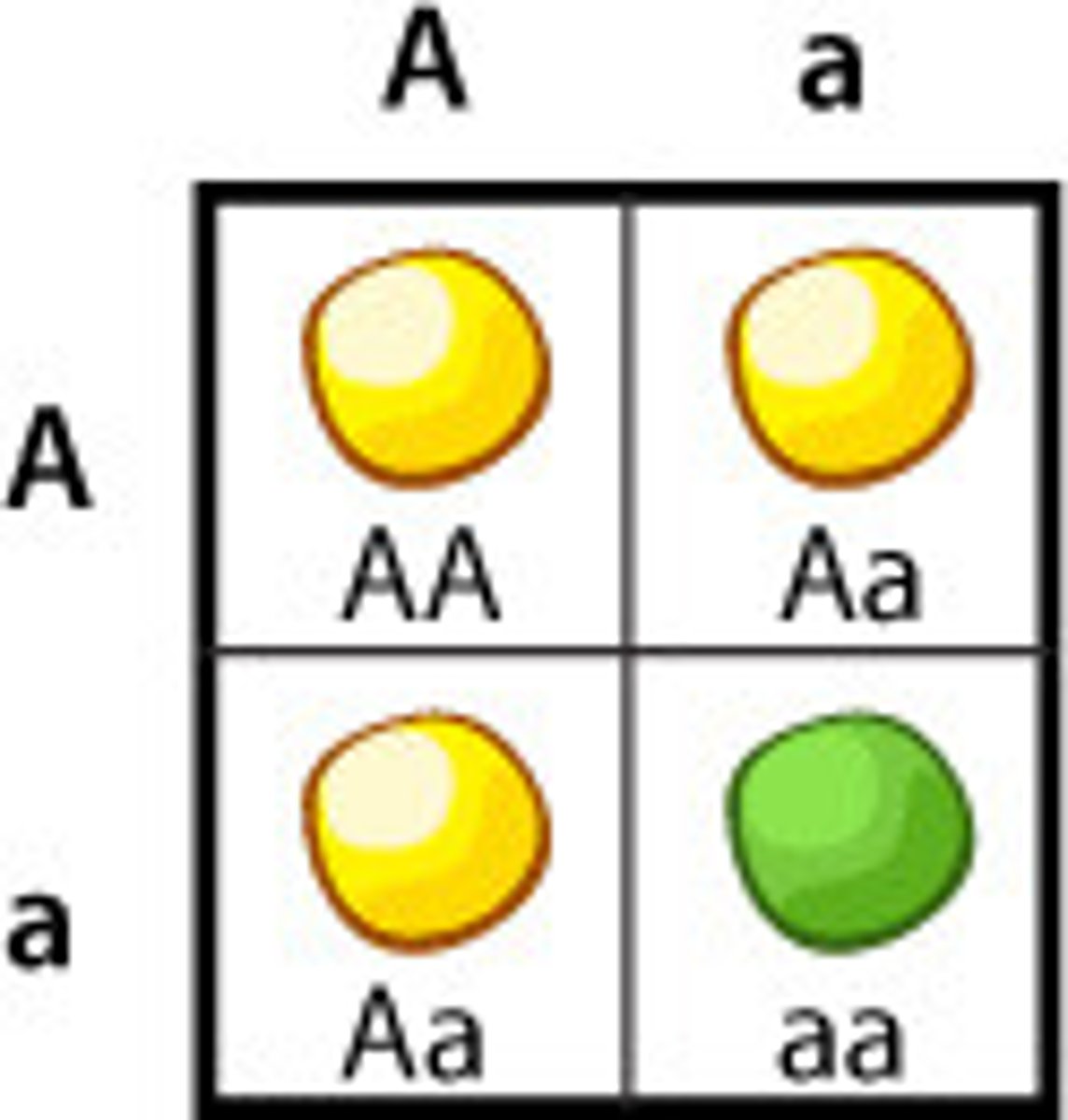
Dominant allele
an allele that only needs one copy to be expressed

Recessive allele
an allele that needs two copies to be expressed

Homozygous
when an individual carries two of the same allele for a trait

Heterozygous
when an individual carries two different alleles for a trait
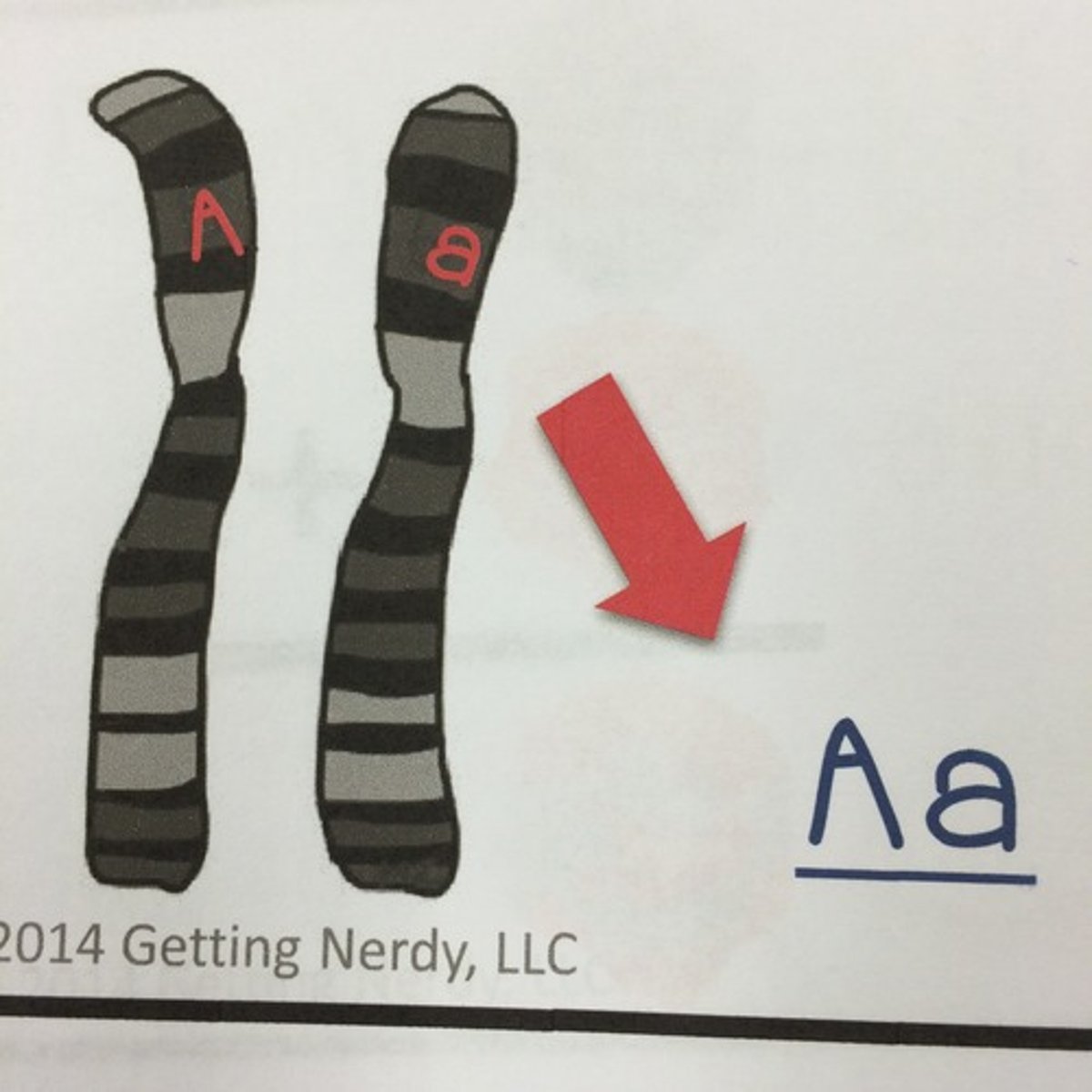
Genotype
the combination of alleles an individual has

Phenotype
the physical expression of genotype
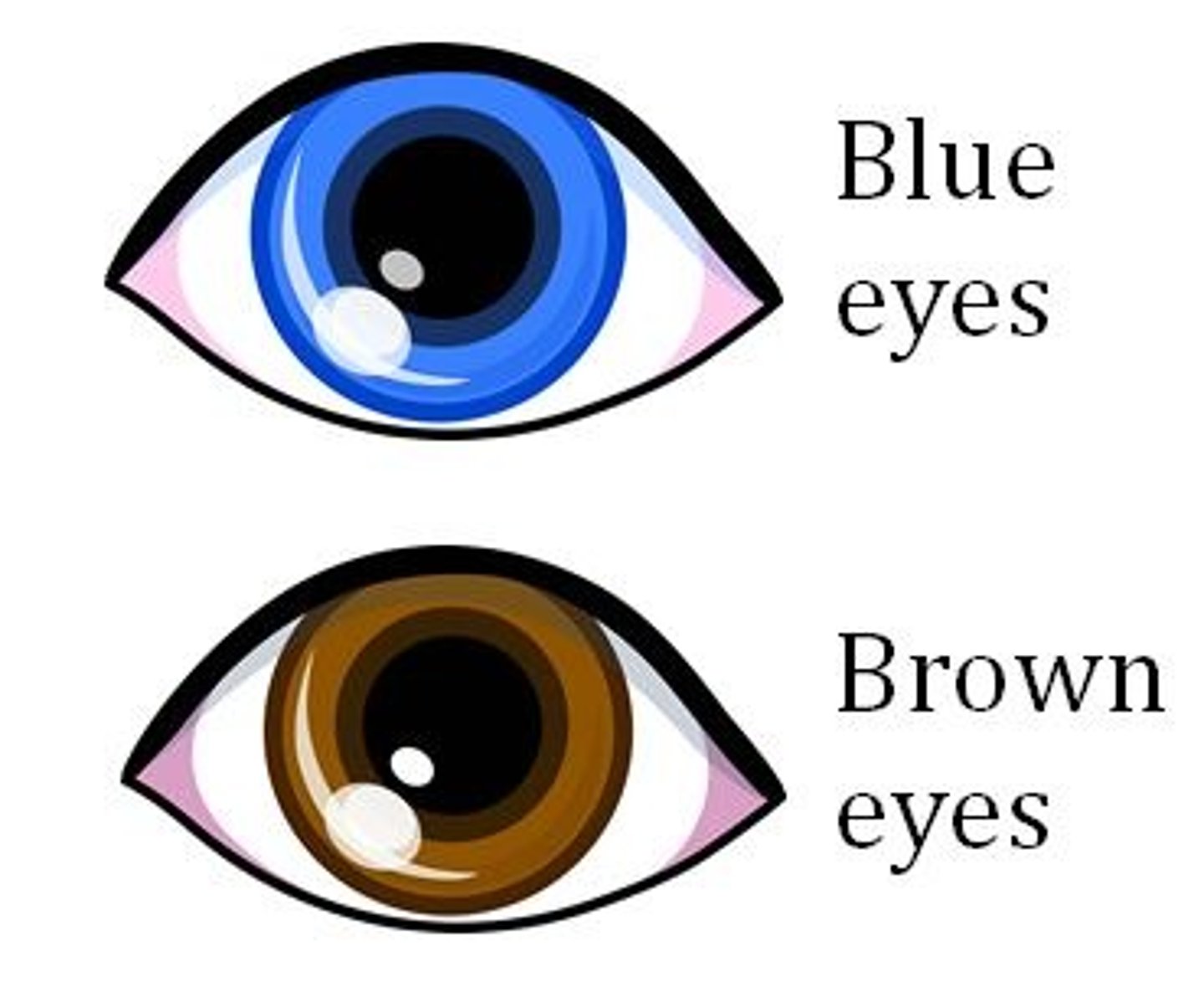
Advantages of whole human genome being studied
-scientists can search for genes that link to specific diseases
-scientists can understand treat inherited disorders
-scientists can trace human migration patterns from the past
Structure of DNA
-a double helix polymer made of four different nucleotides
-bases are A, T , C and G
- A links to T, C links to G
-nucleotide is made with a phosphate a sugar and one of the four bases
-order of the bases determines the order in which amino acids are assembled to produce a specific protein
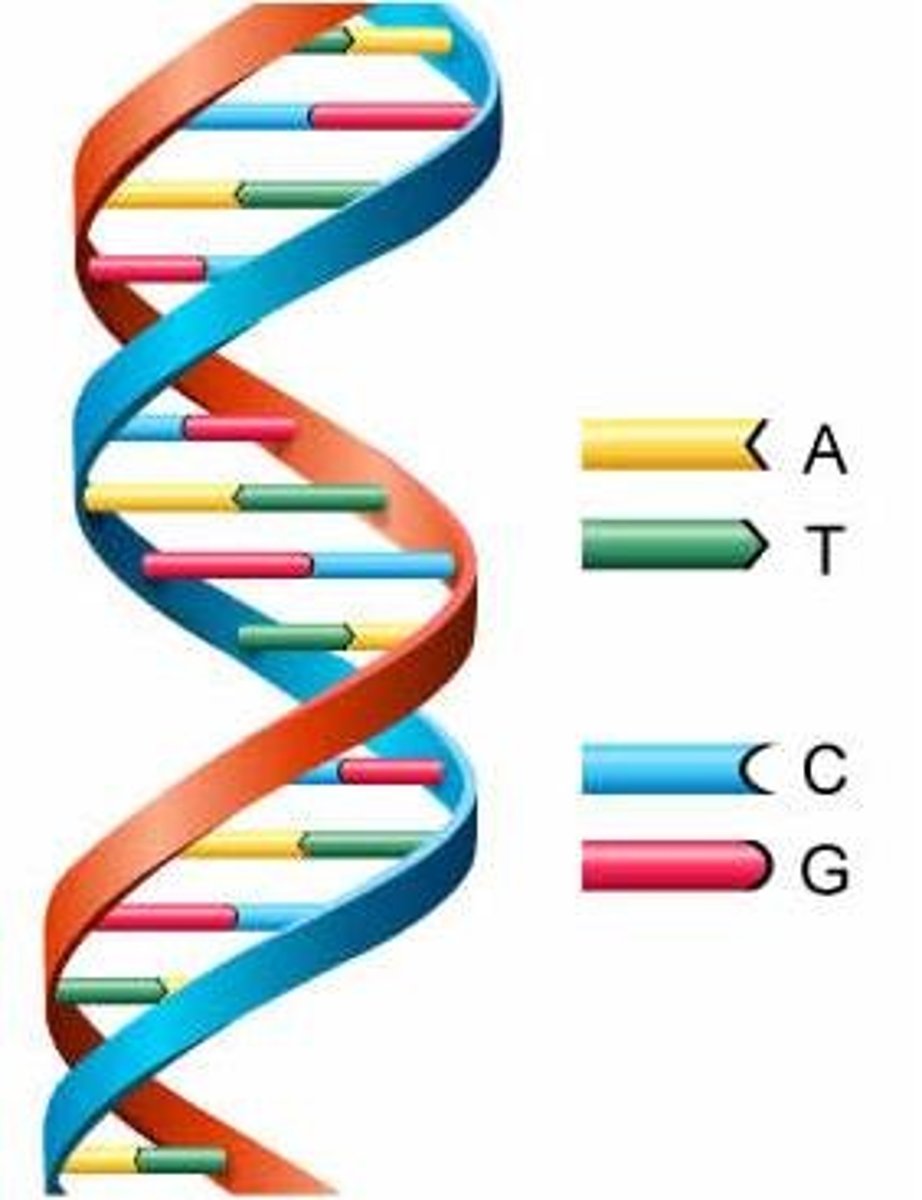
Protein synthesis protein
1 - proteins are synthesised on ribosomes by a template molecule of DNA
2 - Carrier molecules bring amino acids to add to the protein chain in the correct order
3 - when protein is complete it folds up into a specific shape to perform a specific function like enzymes hormones and physical structures
4 - non coding parts of DNA can control the expression of genes by switching them on and off
How do mutations alter the activity of a protein
-most do not alter or appearance or function of the protein
-change in DNA structure may change the amino acid order causing the gene to synthesise a different protein
-some mutations may alter the shape of a protein so the protein may no longer fit the substrate binding sight or lose its strength
-in non coding DNA mutations may alter how genes are expressed
Polydactyl
an inherited disorder producing extra fingers or toes caused by a dominant allele
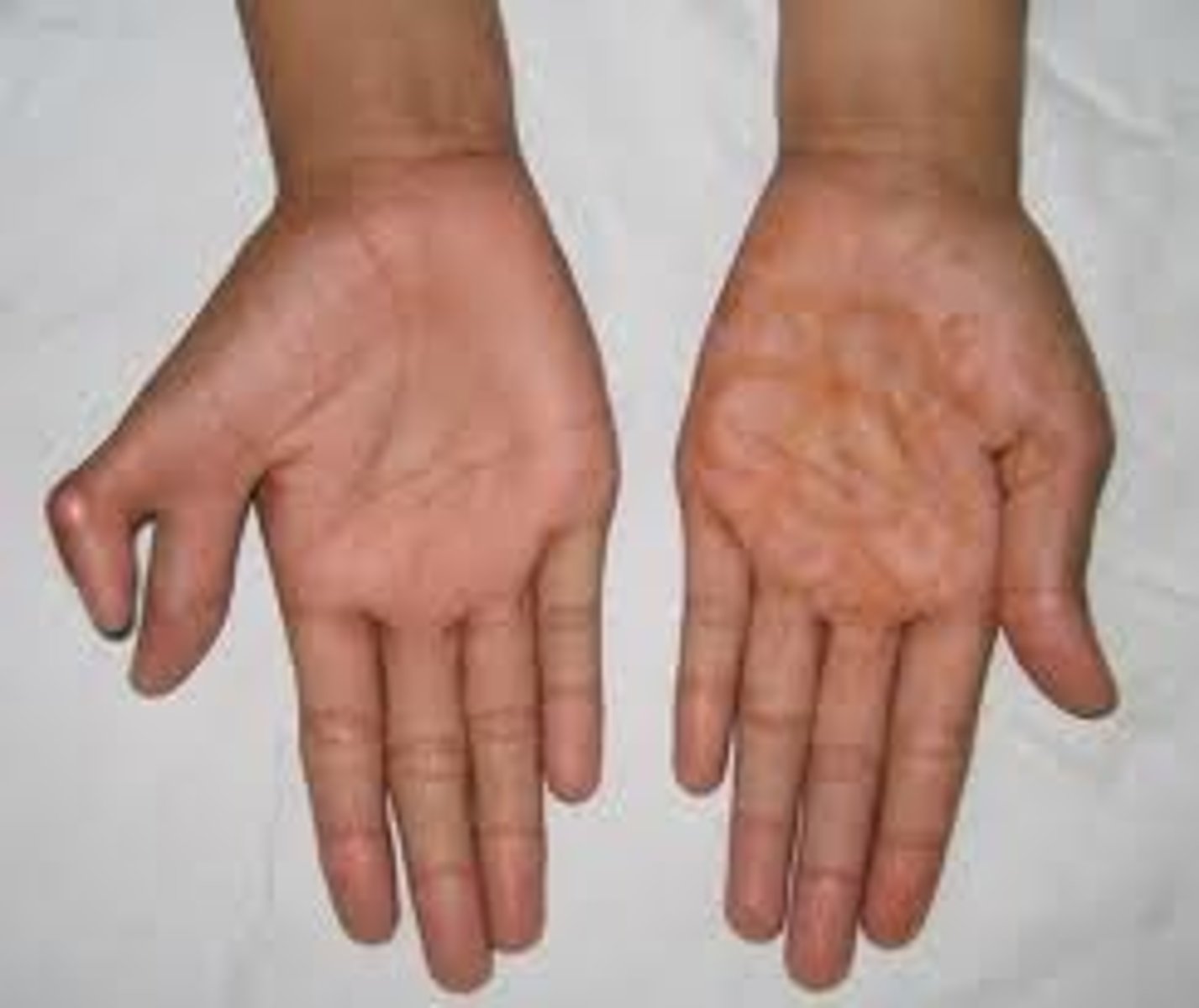
Cystic fibrosis
-inherited disorder leading to a disorder of cell membranes caused by a recessive allele
-1/25 of people in the uk are carriers
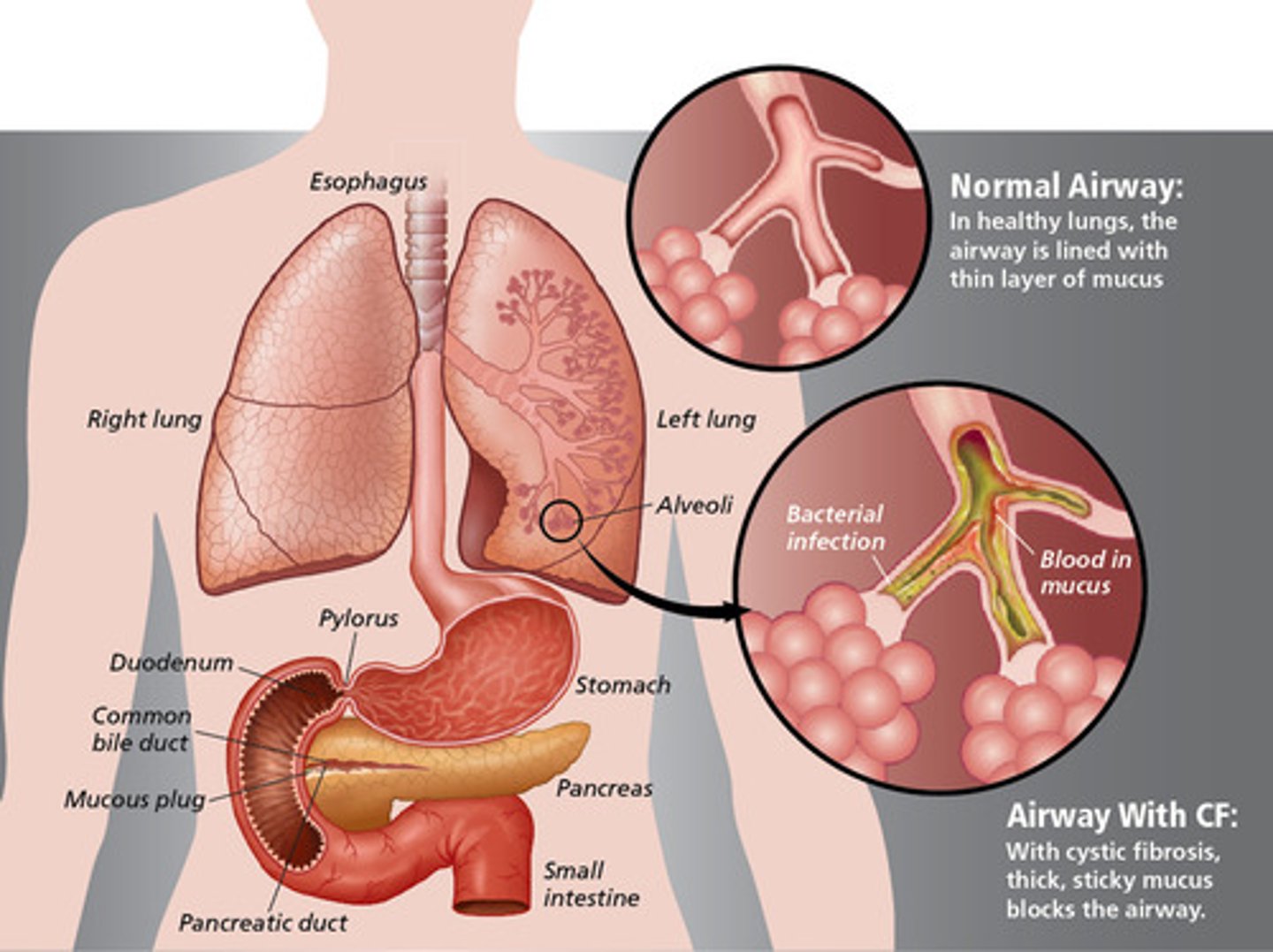
Dealing with suffering of inherited disorders
-embryo screening and gene therapy
-ethical issues behind these methods